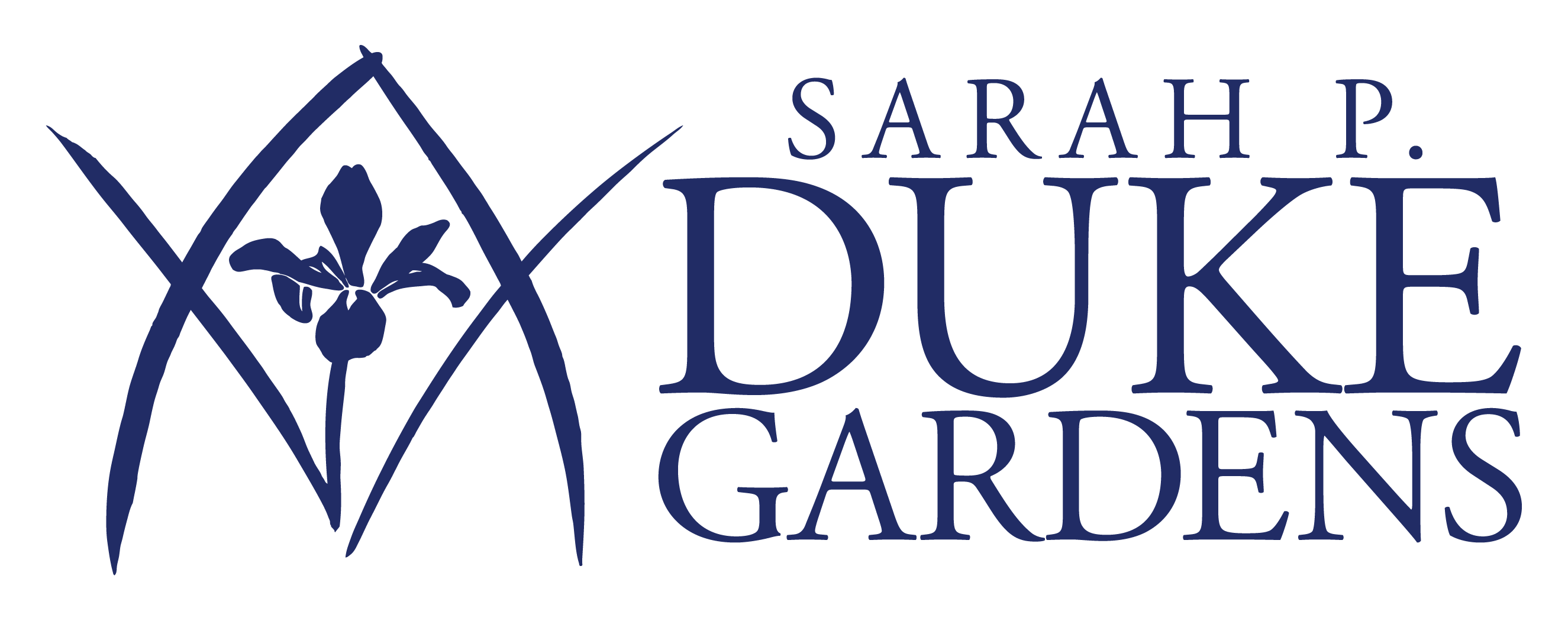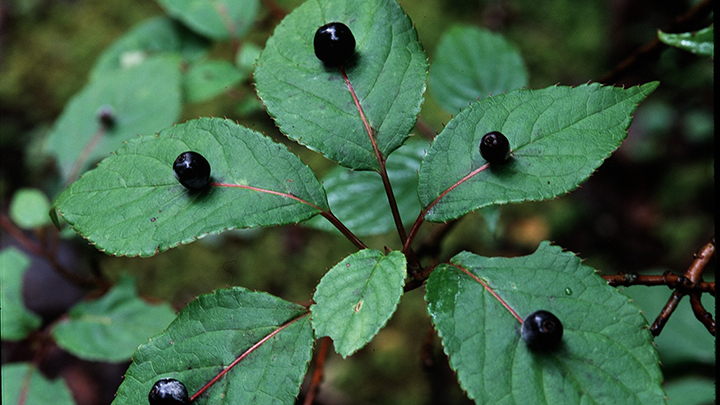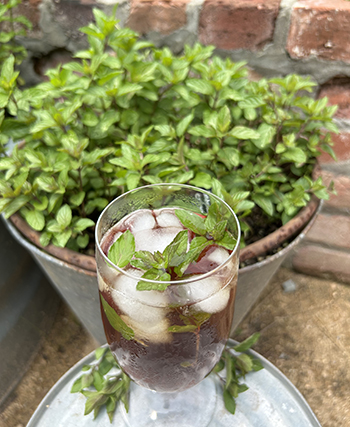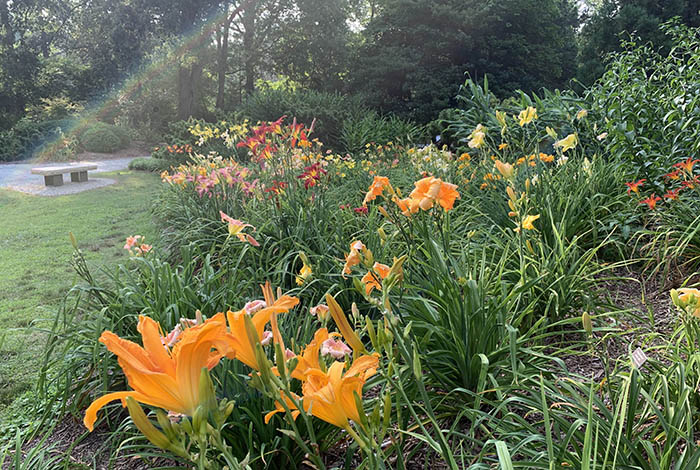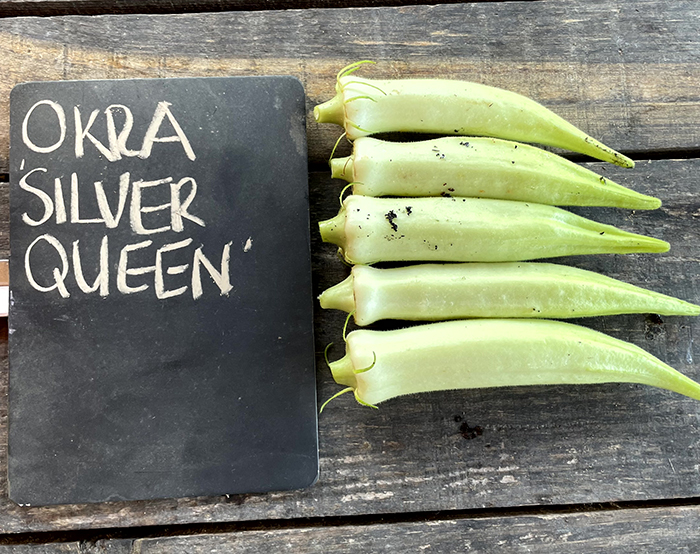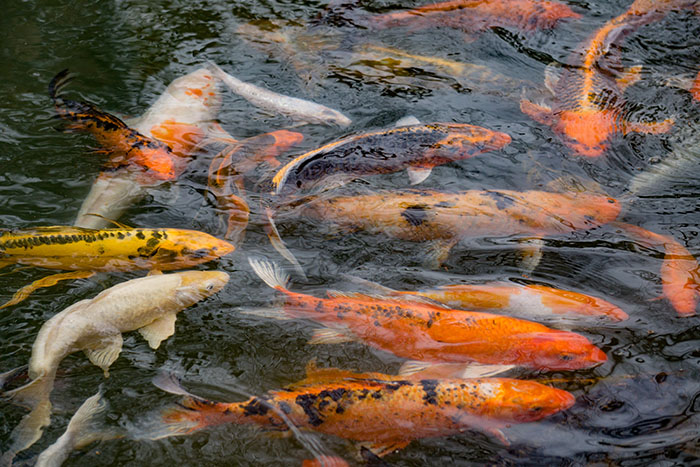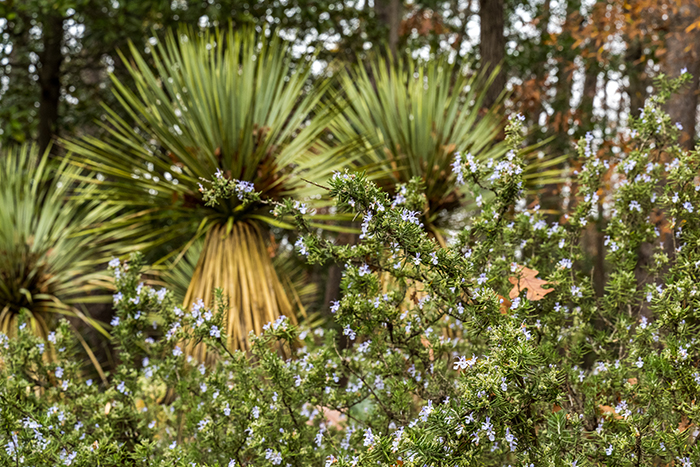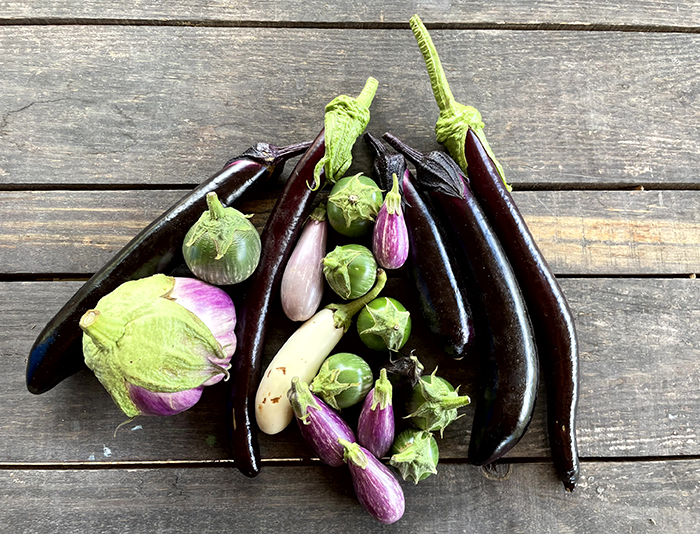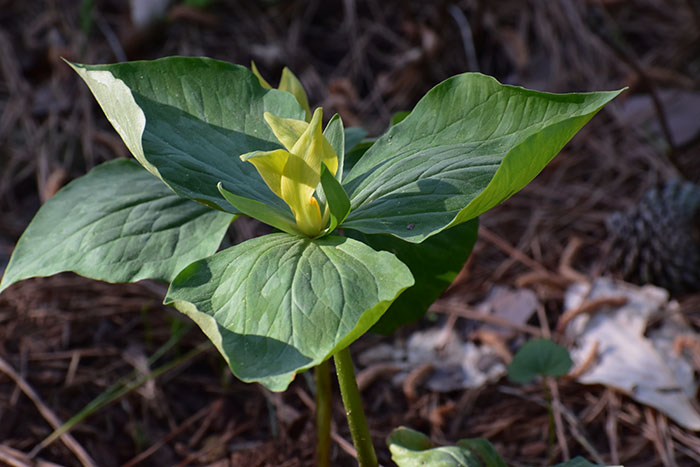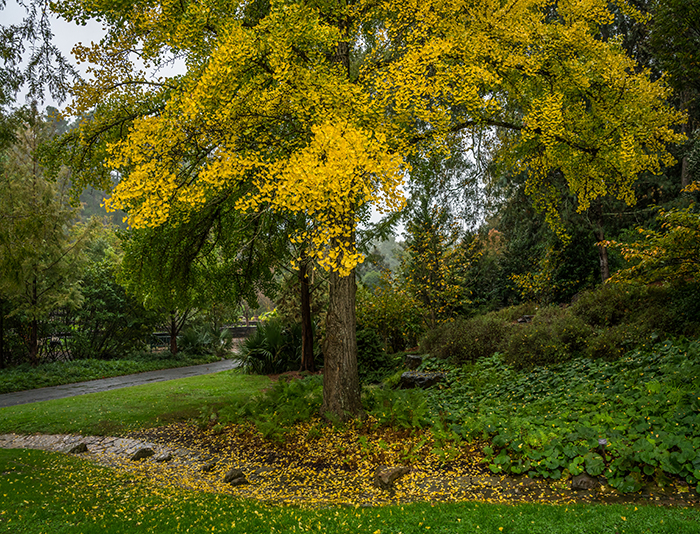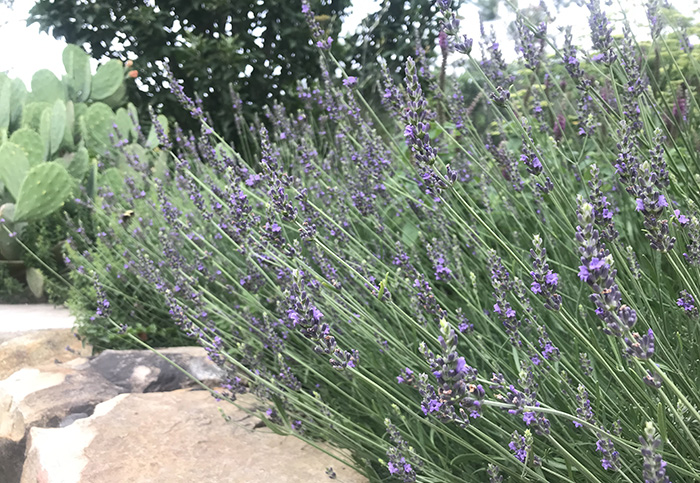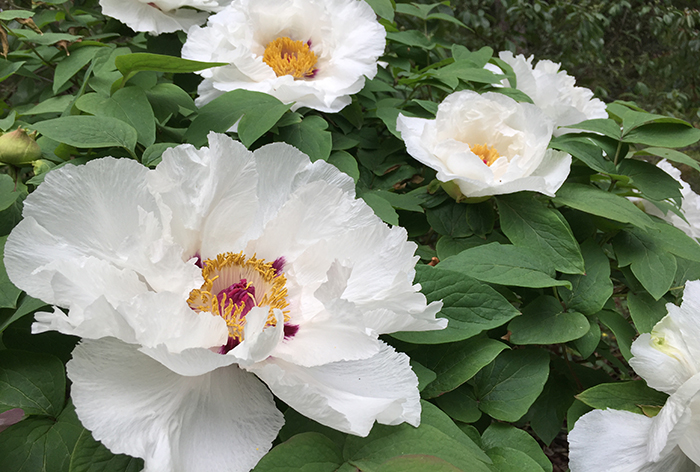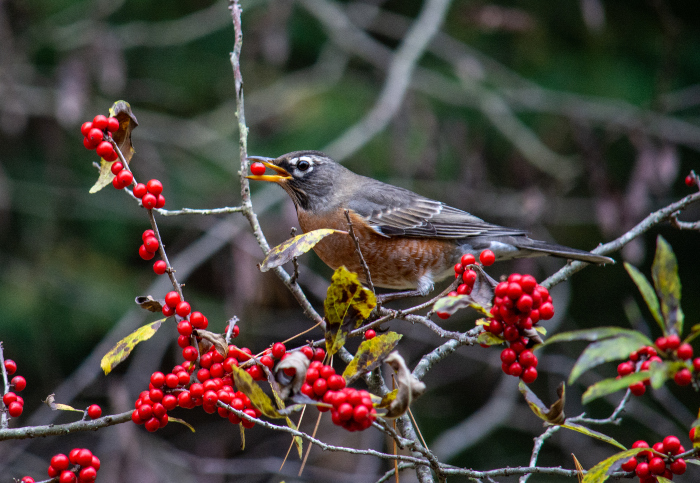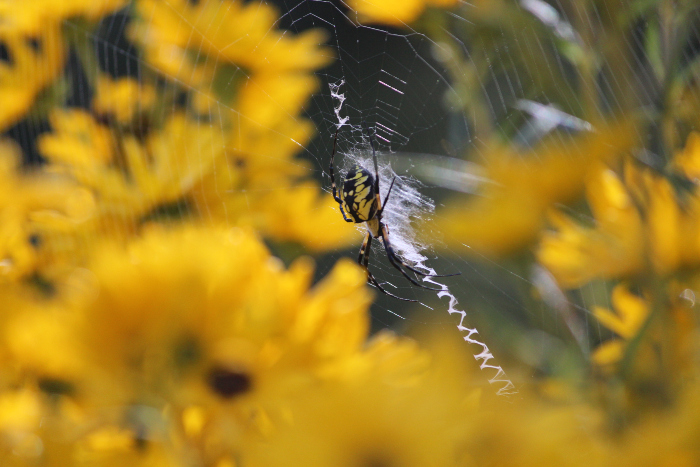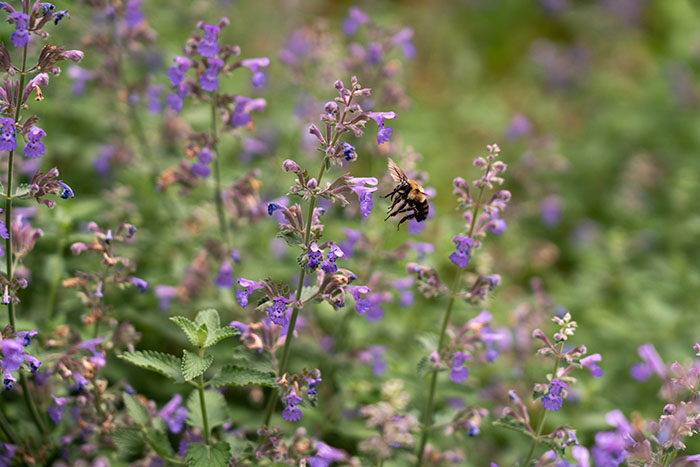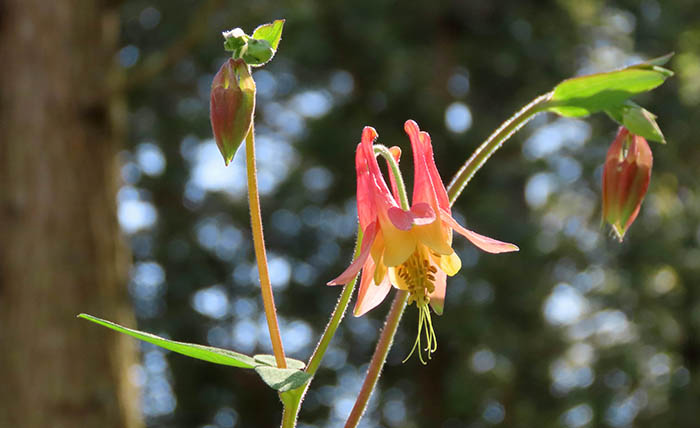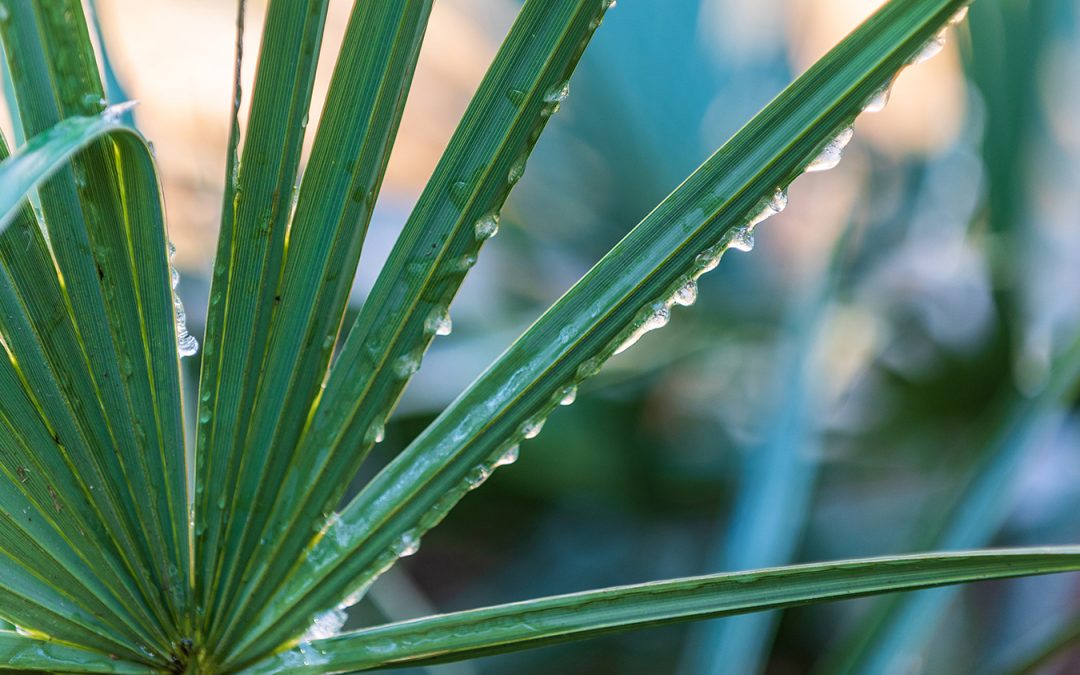Garden Talk digs into the world of plants with horticultural highlights written by Duke Gardens staff members.
We can’t wait to tell you more about some of our favorite flora found throughout the Gardens.

When I walked through Sarah P. Duke Gardens with my friend Jamey and her Seeing Eye Dog, Yoko, I realized how much more alive my senses became. Walking beside someone who experiences the world through sound, scent, and touch instead of sight reminded me to truly notice – and share – what I had often passed by.

With so many different kinds of oaks out there, how do botanists determine what an oak is in the first place, let alone distinguish them from each other?

With their succulent, fleshy leaves and dense, flat clusters of tiny, star-shaped pink flowers, showy stonecrop more than lives up to its name.

The bane of rose gardens everywhere, powdery mildew is one of our most persistent and hated plant diseases.

In addition to all of the typical ways to beat the heat—drinking lots of water, staying in the shade, limiting vigorous activity to early morning and evening—there’s one other surefire method of staying cool that is often overlooked: spending time near plants and trees.
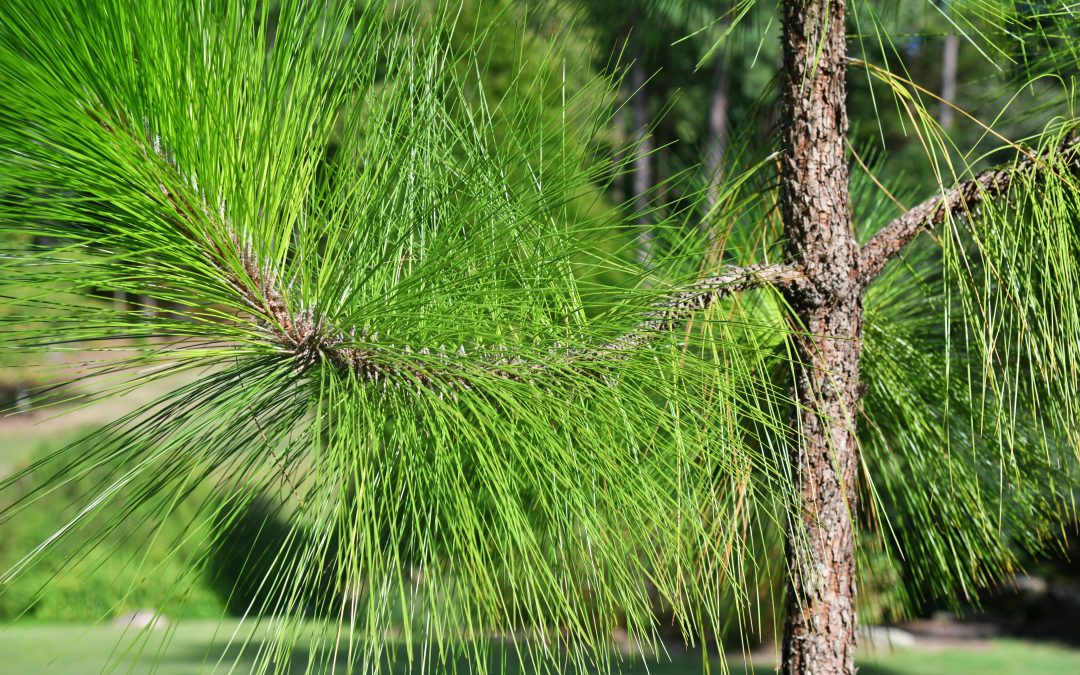
To call North Carolina the “land of the long leaf pine” is no exaggeration, as this tree has shaped the history of the state in numerous ways.
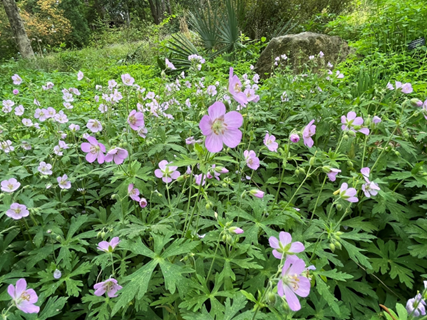
The spotted geranium is one of the few geraniums native to eastern North America and is found in woodlands from Canada to Alabama.
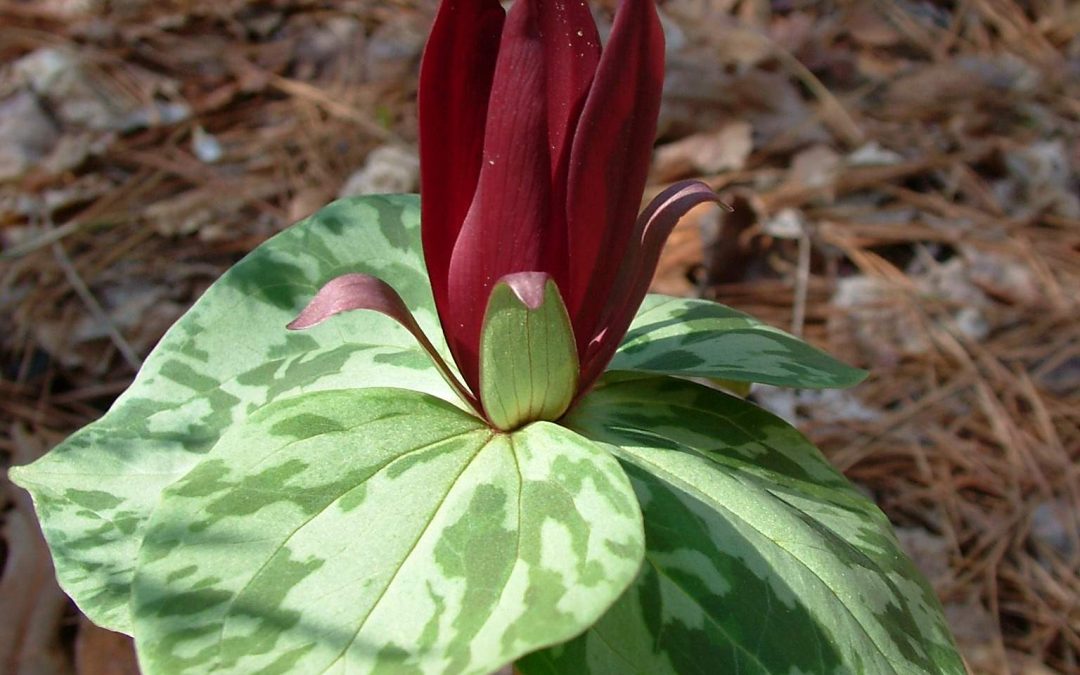
This native plant has no shortage of common names—depending on who you talk to, it might be little sweet betsy, purple toadshade, whipporwhill flower, or any variation on the above.
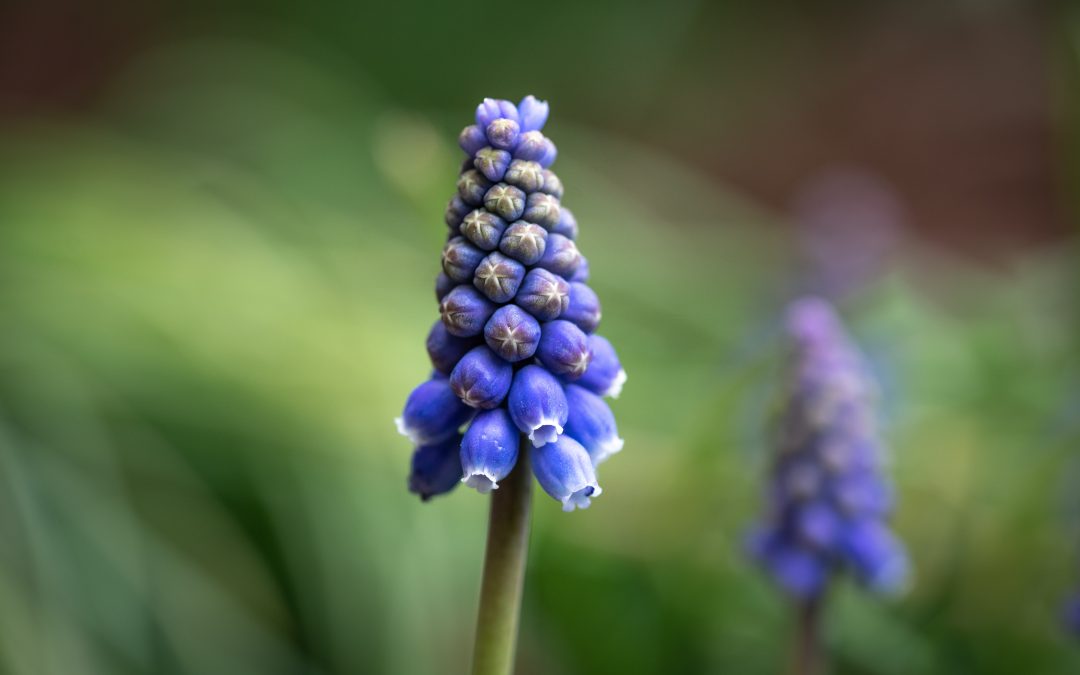
With clusters of tiny, round, deep blue and purple flowers, it’s obvious how grape hyacinths (Muscari spp.) got their name.

With its peeling red-brown bark, the edges which curl and curve like ribbons and wrapping paper, the paperbark maple (Acer griseum) tree is eye-catching year-round.

Have you ever wondered where the plants for sale at nurseries and stores originally come from? In the case of Chapel View™ Japanese cedar (Cryptomeria japonica ‘PIICJ-I’ Chapel View™), the answer is close to home.

Fall is peak season for the sasanqua camellias (Camellia sasanqua), which burst into bloom as the days darken. Learn more about these gorgeous flowers, which are usually pink, white or some combination of the two, with five simple petals.
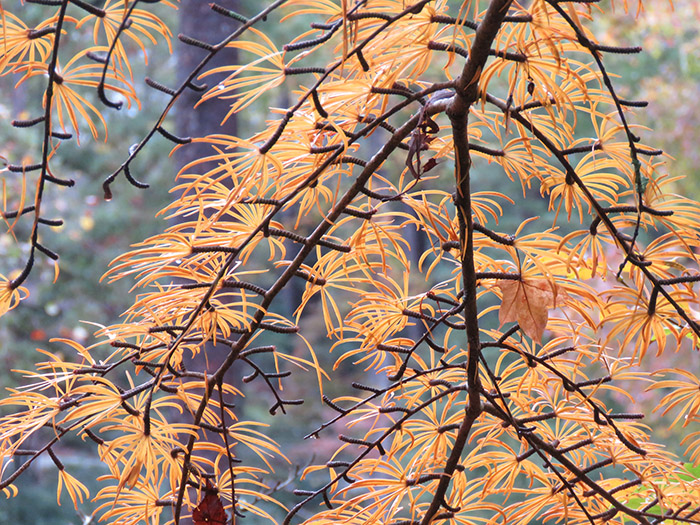
Conifers are generally evergreen, but there are a handful of exceptions with wonderful fall color, including the golden larch (Pseudolarix amabilis).

Aquatic plants have fascinated and delighted humanity for thousands of years thanks to their ability to bridge the gap between land, water and sky.

If you look closely at the stonework connecting the Mary Duke Biddle Rose Garden and the Walker Dillard Kirby Perennial Allée or bordering the Virtue Peace Pond and the Angle Amphitheater, you’ll it covered with vines with unusually tiny heart-shaped leaves and adventitious roots emerging from the flattened woody stems.
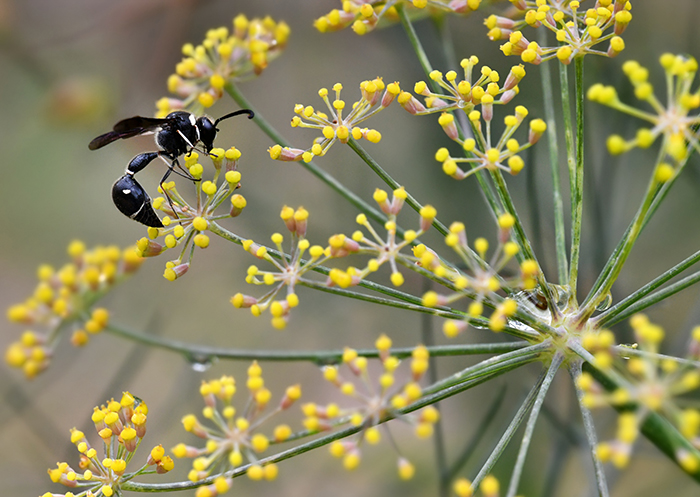
Many creatures like ants, beetles, wasps and flies are pollinators in their own right, and deserve recognition for their hard work and effort.

Here in central North Carolina, June may bring either rain or shine, but the bigleaf hydrangeas will brighten your day nonetheless.
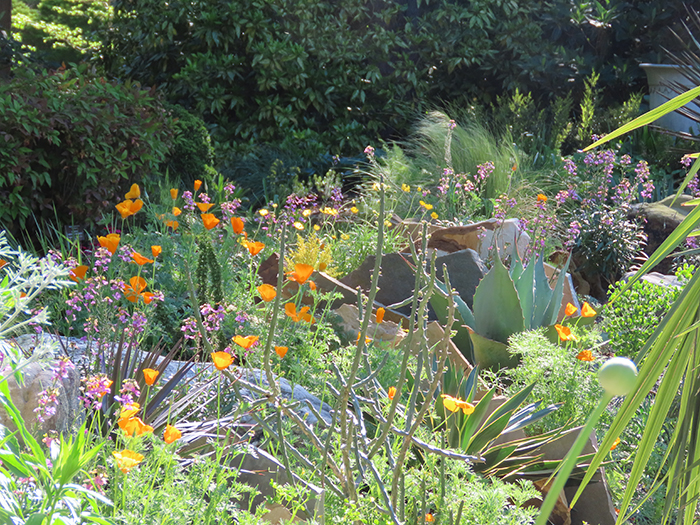
This spring, you don’t have to travel all the way out to the West Coast to enjoy the blooms of California poppies (Eschscholzia californica).
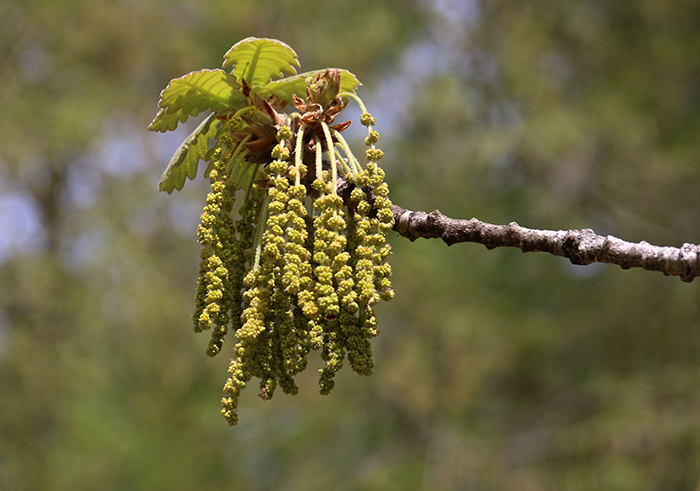
Ah, spring, a time of awakening and renewal, of warmer and longer days filled with bird songs, of cherry blossoms and tulips—not to mention drifts of yellow pollen filling the air and blanketing everything left outside for more than a few hours.
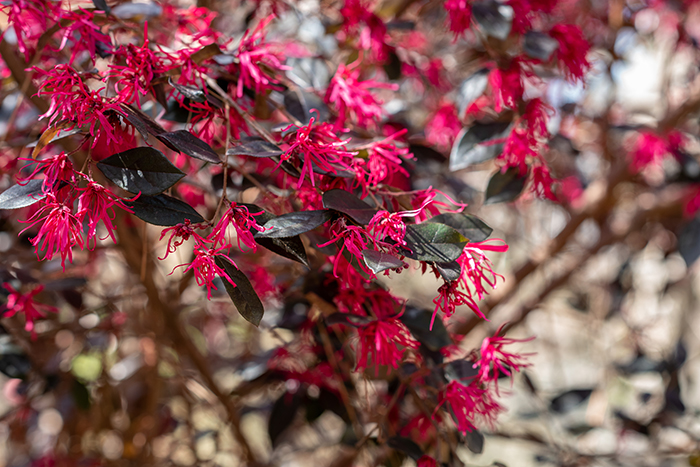
If you spy a plant sporting what look like pink pom-poms in mid- to late March, you have most likely discovered a Chinese fringe flower (Loropetalum chinense) in full bloom.
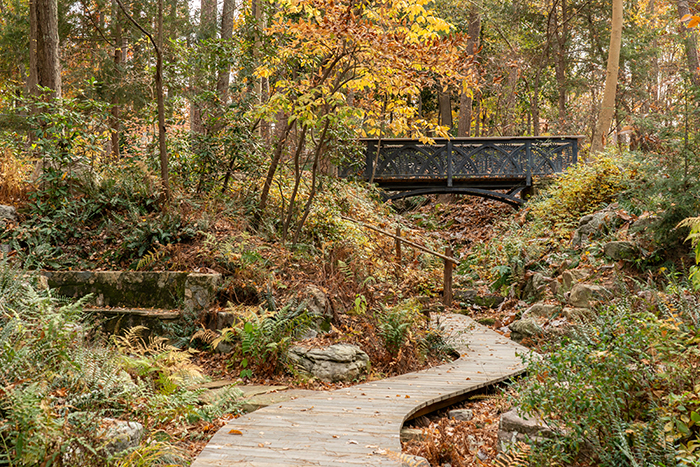
Although it seems hard and solid on the surface, the ideal soil is actually light and fluffy on a microscopic level, allowing air and water to easily infiltrate.
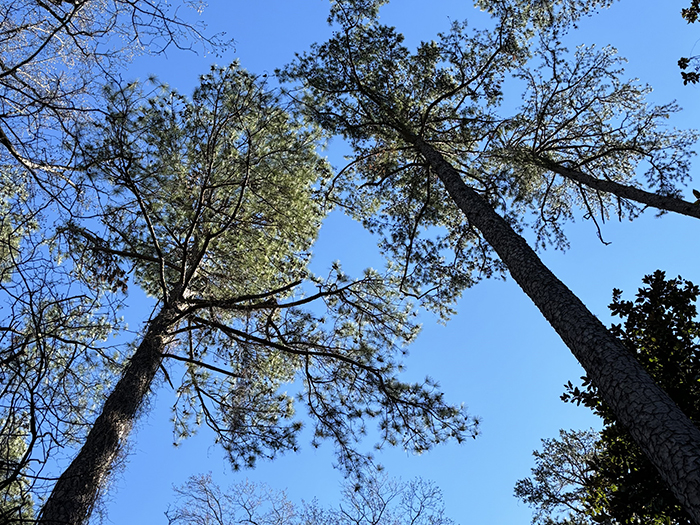
On a clear chilly morning in early February, a group of Duke Gardens members gathered together for a special treat: Matthew Archibald, an ISA Board Certified Master Arborist and educator with Leaf & Limb, a local tree service and tree care provider, led the group on a tree walk through the Blomquist Garden of Native Plants.
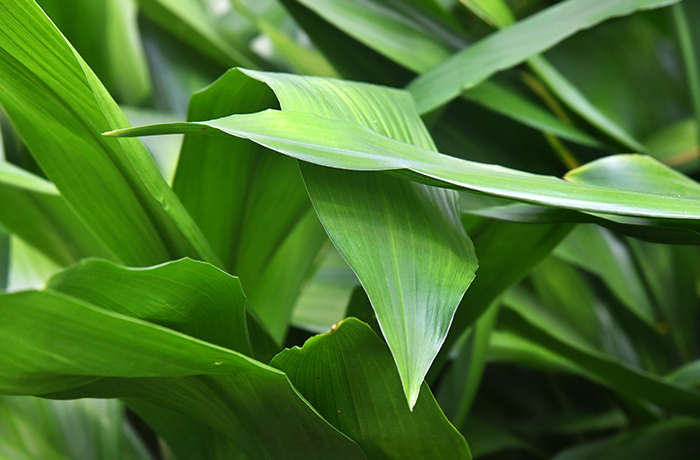
Most commonly grown indoor plants aren’t hardy enough to survive outdoors in the winter, but the cast iron plant (Aspidistra elatior) is a rare exception with roots in both worlds.

Unlike the more common American witch hazel (H. virginiana), which blooms in the fall and is found across eastern North America, Ozark witch hazel blooms in the spring (vernalis” is Latin for “spring”), and wild populations are limited solely to the Ozark plateau in Missouri, Arkansas and Oklahoma.
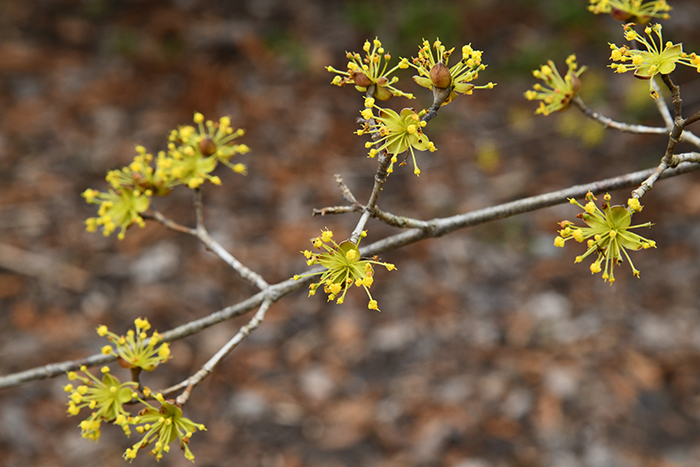
The Chinese cornel dogwood (C. officinalis) is especially notable in February for its bright yellow clusters of early-blooming flowers.
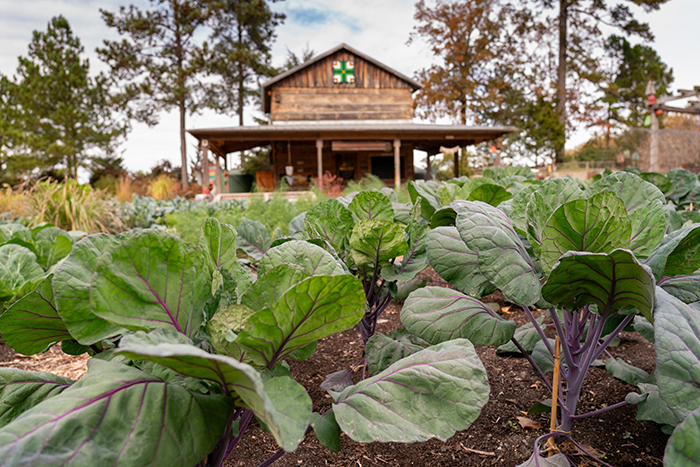
Late winter and early spring is the peak season for brassicas, or members of the mustard family, in the Charlotte Brody Discovery Garden.
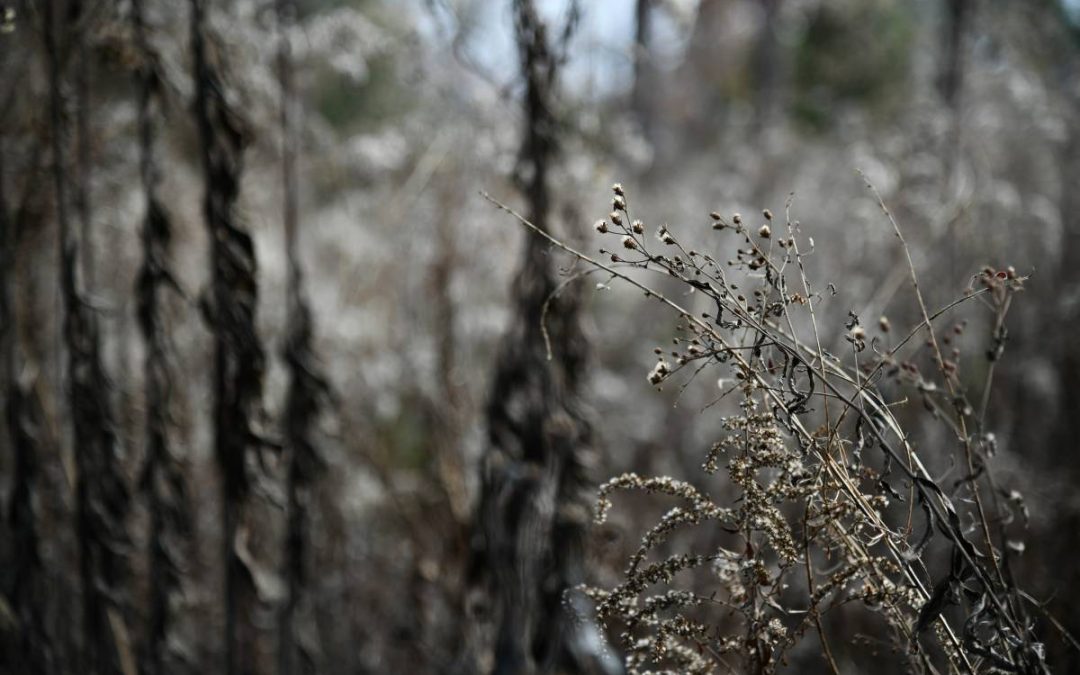
The impulse to organize and tidy a garden over the winter is a natural one, but it’s not so helpful to the animals that call it home.
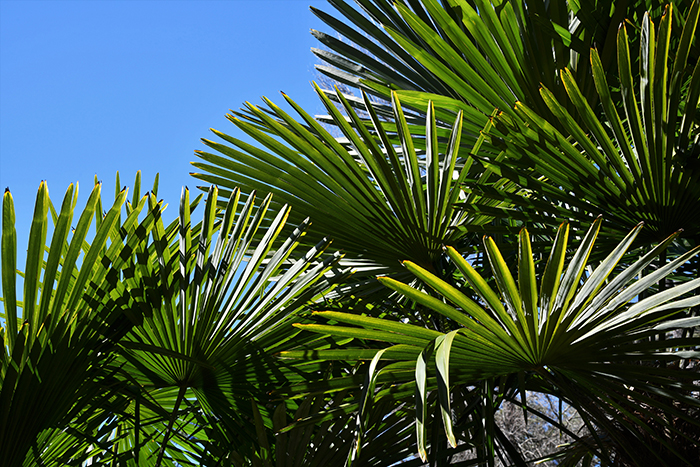
The word “palm” usually conjures up visions of tropical beaches or rainforests, but a surprising number of these plants are capable of surviving hard freezes and even snow without artificial protection.
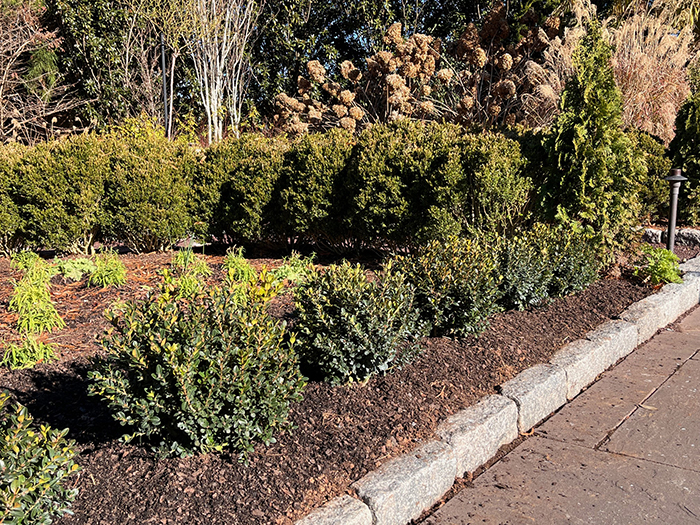
“Thinking outside the box” encourages us to adopt creative solutions, but when it comes to landscaping, it’s easy to see why people have stuck with boxwood (Buxus spp.) for so many years.

The winter landscape offers the unique opportunity for closer inspection, and it quickly becomes apparent that there’s more to these dormant trunks and branches than initially meets the eye.
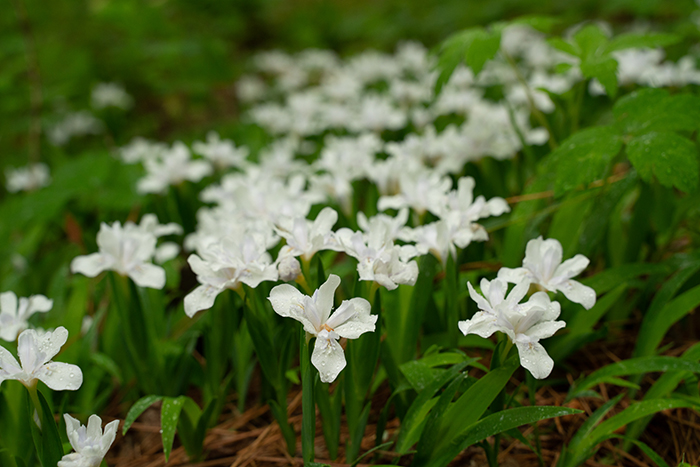
“Groundcover” is a catch-all term for any quickly spreading plant capable of expanding and filling a wide area over time.
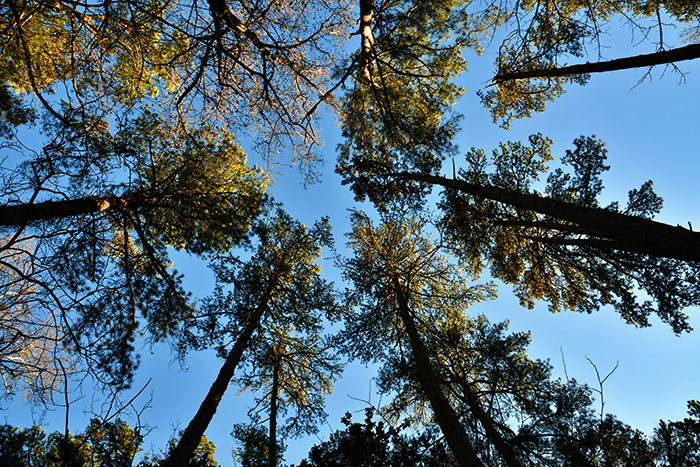
The oldest known tree in the garden may have fallen, but it’s entirely possible that an even older tree remains hidden in plain sight.
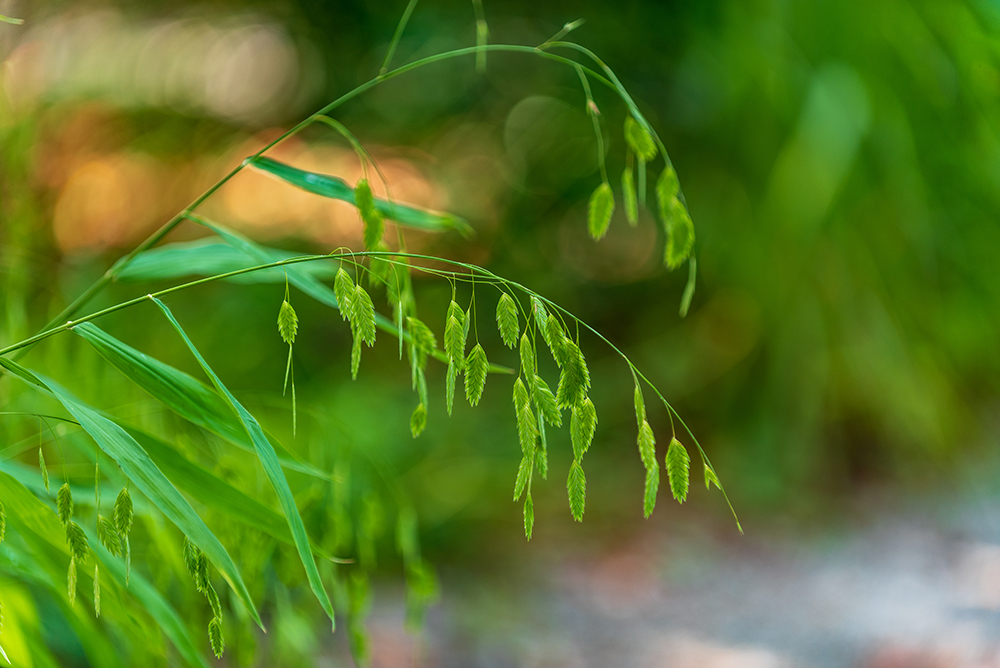
Anyone strolling along the banks of the Eno River and other waterways in central North Carolina in late summer and early fall will quickly spot the thick patches of river oats lining the banks and the surrounding woodlands.
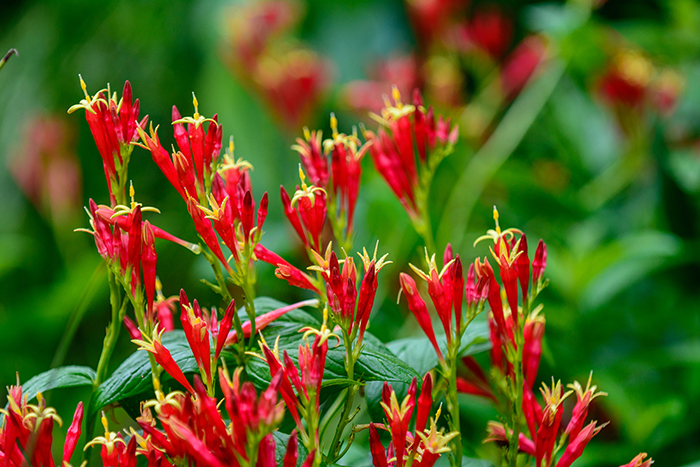
Commonly known as Indian pink or woodland pinkroot, Spigelia marilandica is a beautiful perennial native to the Southeastern United States.

Dwarf tigertail spruce has naturally bicolor needles—green on top and silver-blue below—and thus will appear different depending on your angle of view.
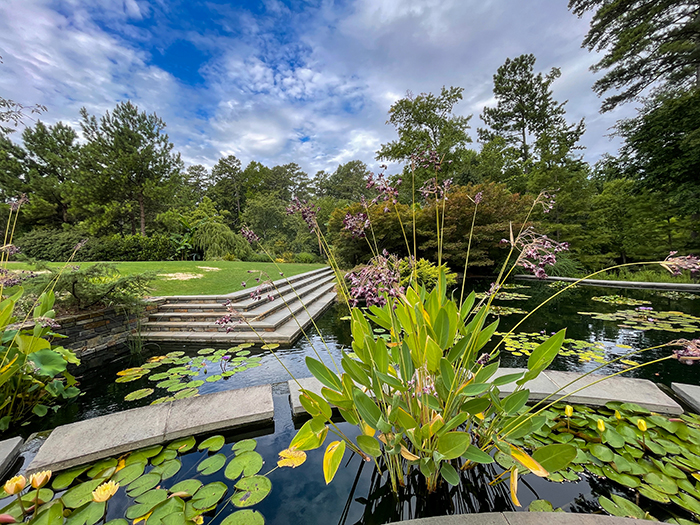
With its long, swaying stalks and bright purple flowers, this plant stands out even at a distance, waving in the wind just like a flag on a flagpole—fortunately, no alligator required.
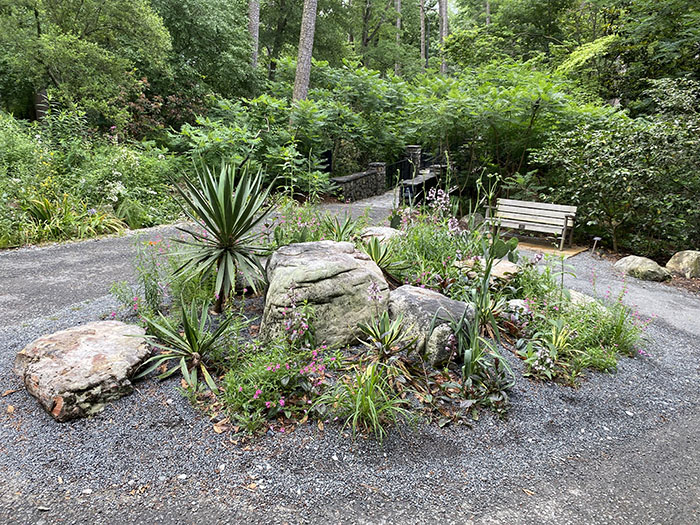
For plant geeks like me, crevice gardening offers an opportunity to learn about and experiment with fascinating ecosystems and plant communities with which I rarely interact.
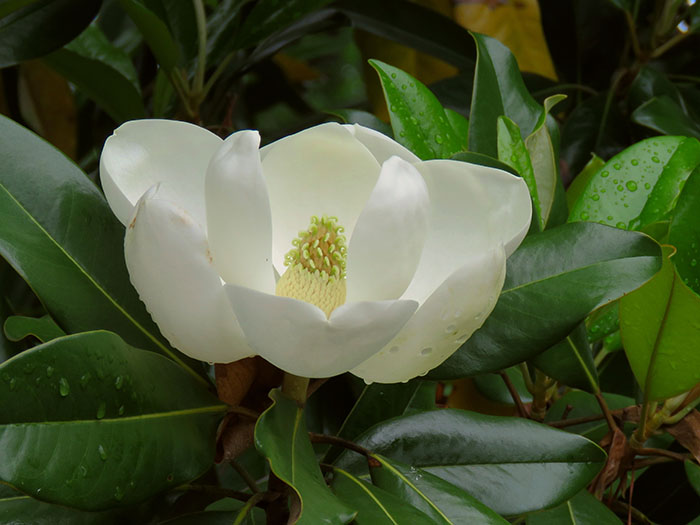
Step under the canopy of a mature Southern magnolia (Magnolia grandiflora) and discover a different world.
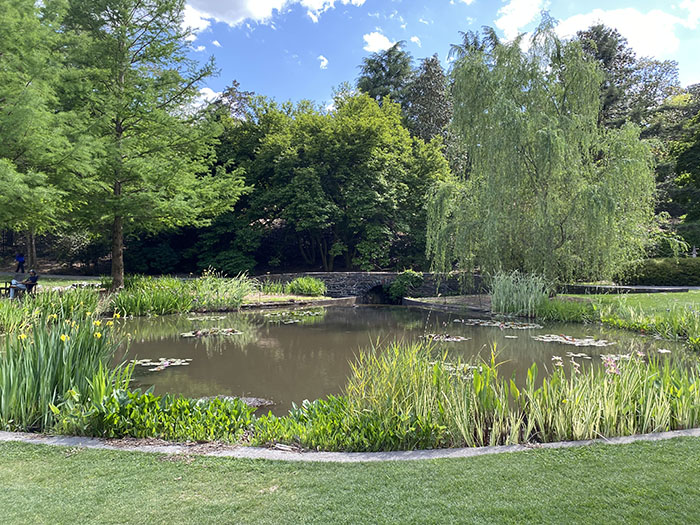
Here at Duke Gardens, we have more than 20 water features across our 55-acre campus. They are often the most popular attractions on our grounds, no matter what is in bloom, and for good reasons.
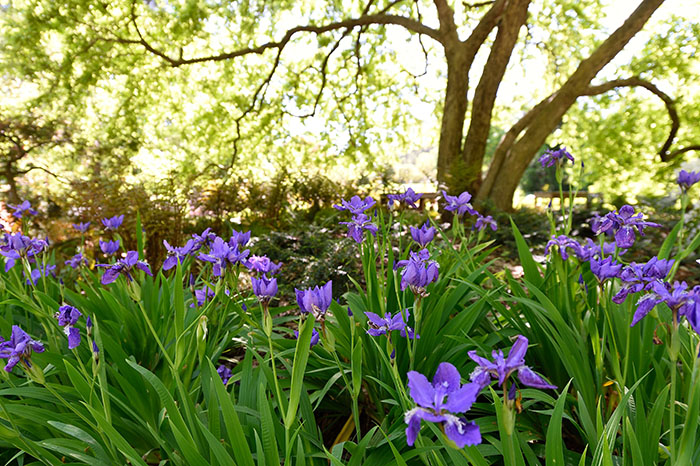
Like its namesake rainbow, I. tectorum comes in a wide variety of colors, from deep purple to lavender to completely white to pale blue with speckled falls and a fuzzy white fringe
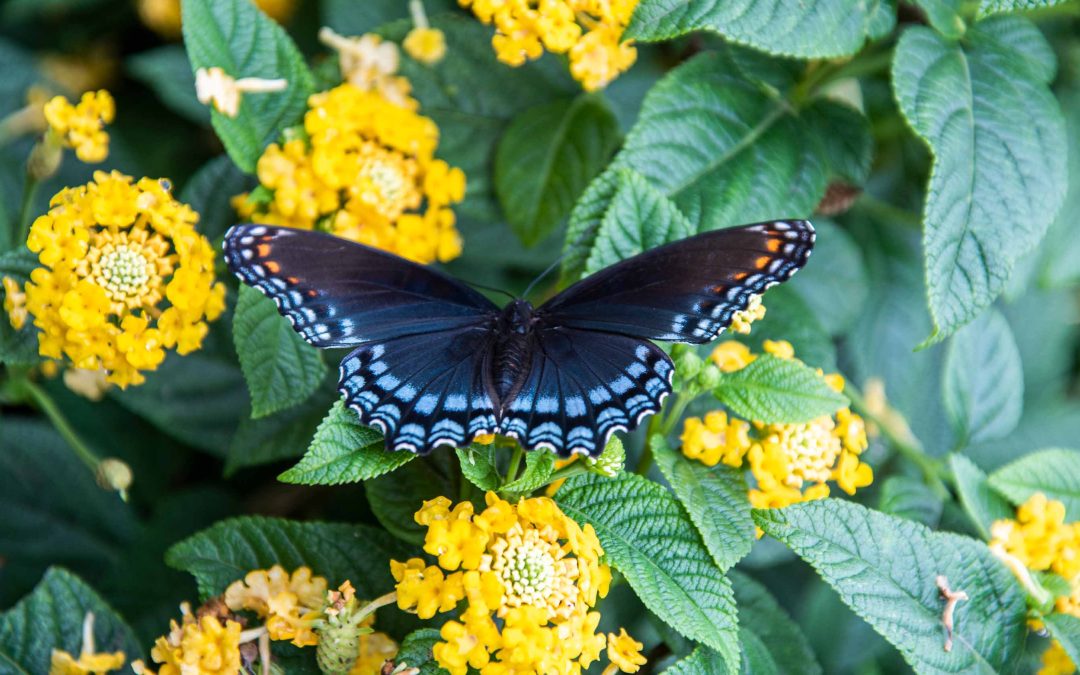
Plants use a language of sorts to communicate with potential pollinators. A pollinator syndrome refers to a suite of traits that developed as plants and their pollinators coevolved and adapted to each other’s changes over time.

Instead of a mass of flowers high up in the canopy, the flowers of the dwarf Fuji cherry are at eye-level, making it easy to appreciate them up close.
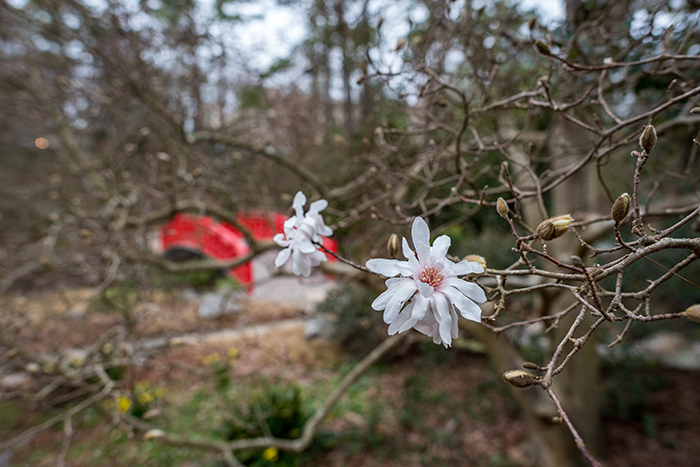
We typically think of species as fixed and immutable, but the boundaries between different kinds of organisms are more fluid and permeable than we assume, especially when it comes to plants.

Cherokee sedge is tough, durable and adaptable to a wide range of soil and shade regimes, and thus it’s easy to incorporate in almost any garden setting.

To say that coast redwoods (Sequioa sempervirens) inspire awe and wonder is a vast understatement.
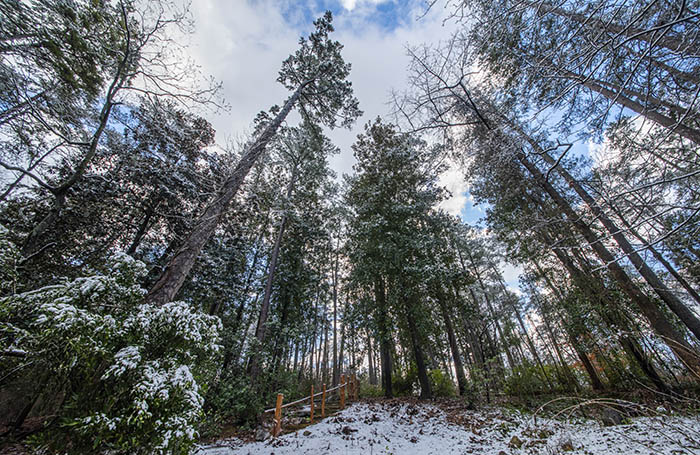
Duke Gardens is pleased to share this informative Q&A about tree care from Basil Camu, owner of Leaf & Limb, one of our corporate members.
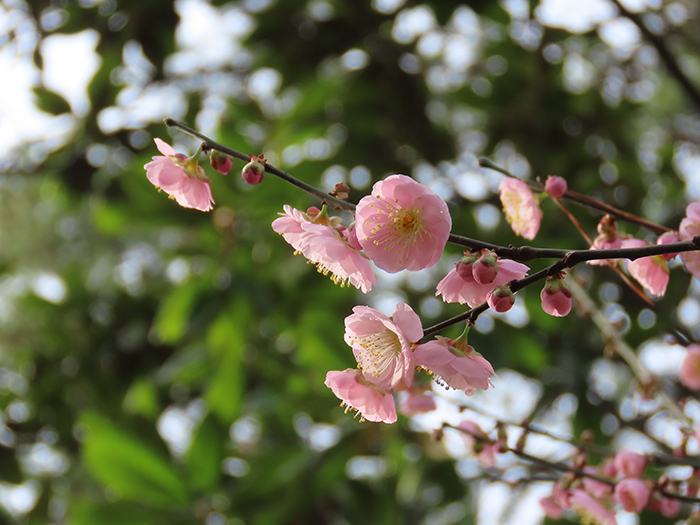
For thousands of years, the iconic flowering plum (Prunus mume) has brightened the chilly gray days of late winter with its dazzling display of colorful blossoms.
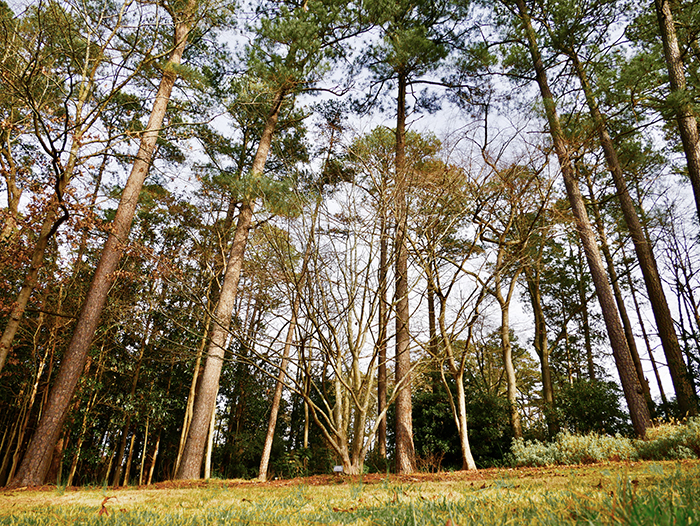
January might seem like a lull, but a walk through the gardens right now will reveal numerous species in bloom, including those of Persian ironwood.
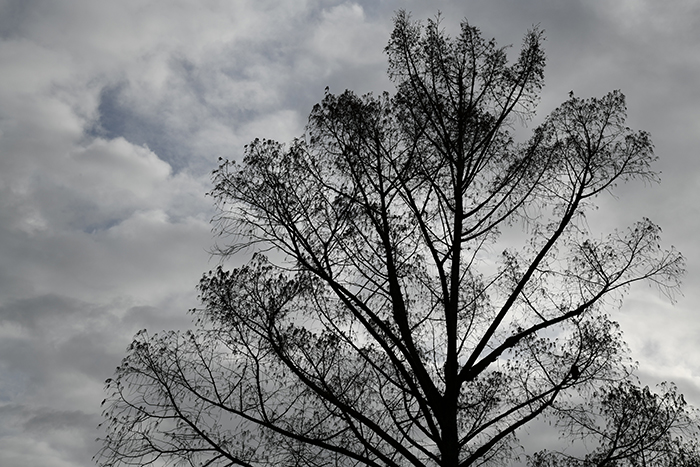
All dawn redwoods alive today belong to an ancient lineage stretching back millions of years.
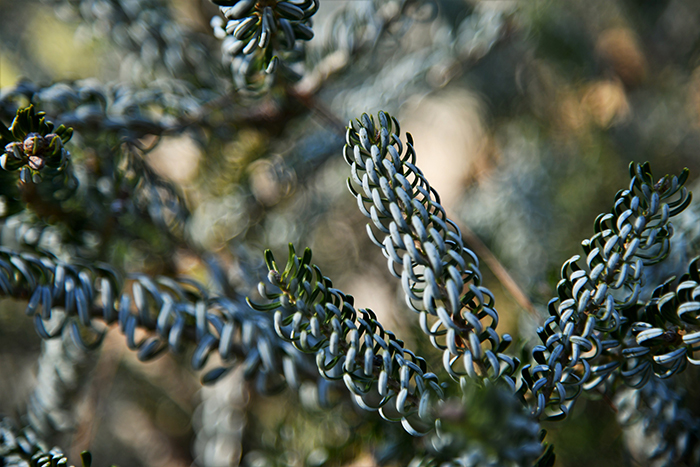
For one month at the end of every year, millions of Americans who celebrate Christmas bring a bit of nature into their living rooms via the Christmas tree itself.
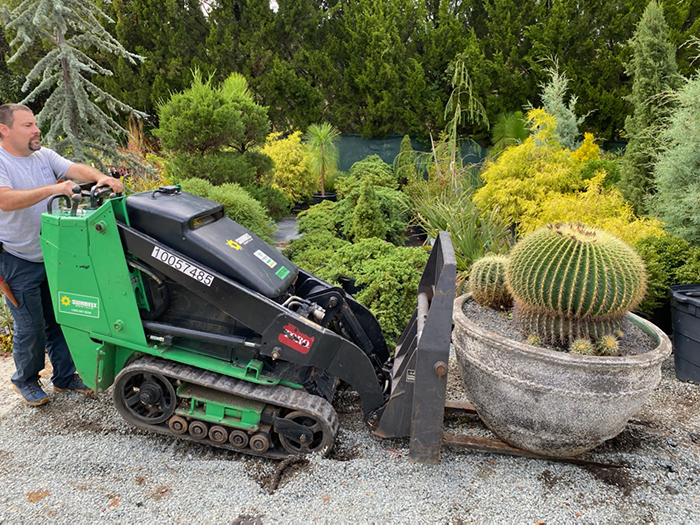
Here at Duke Gardens, we have hundreds of non-hardy plants — plants intolerant to cold temperatures — around the garden that must be stored in the greenhouse during the winter months.
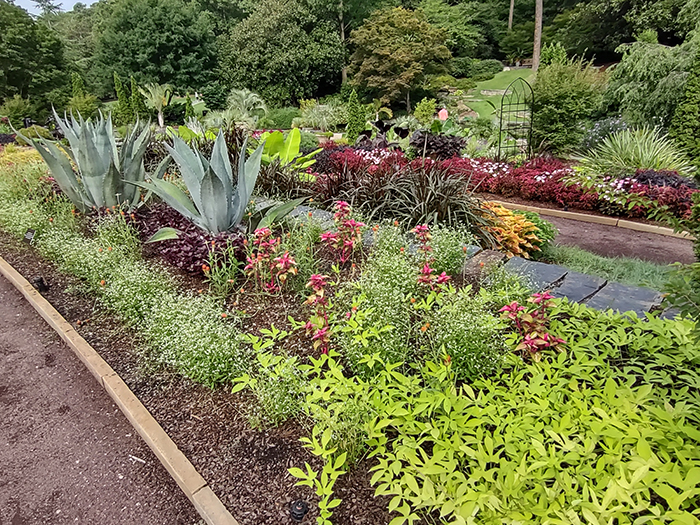
As a gardening professional, I am ready to take up the cause, and I want to invite you to join me in my endeavor to leave the garden bed as “messy” as possible for the benefit of our fauna neighbors (and also our backs and knees).
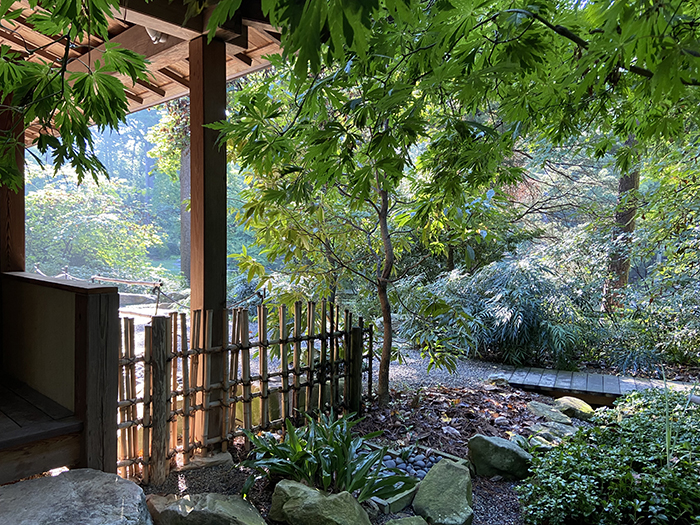
As Japanese gardens have gained widespread popularity over the past century, many non-Japanese designers and horticulturists are faced with the question, “What defines a Japanese garden?”
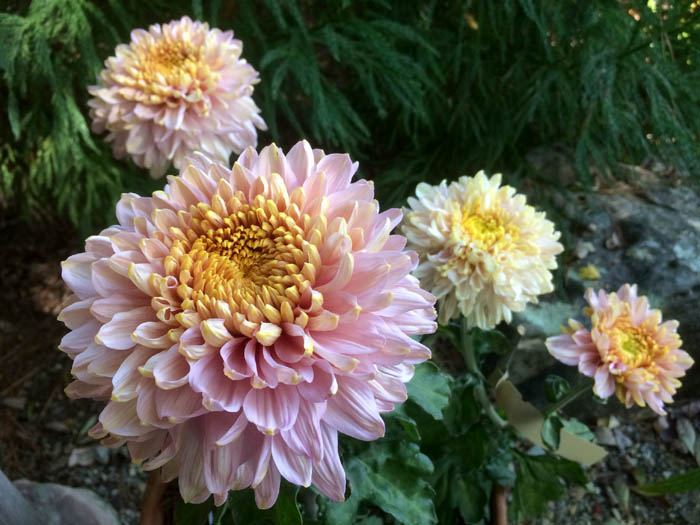
Several years ago, I stumbled upon the exhibition chrysanthemum show at Duke Gardens, and the flower that I had always considered to be the bridesmaid of the plant world suddenly became the bride.
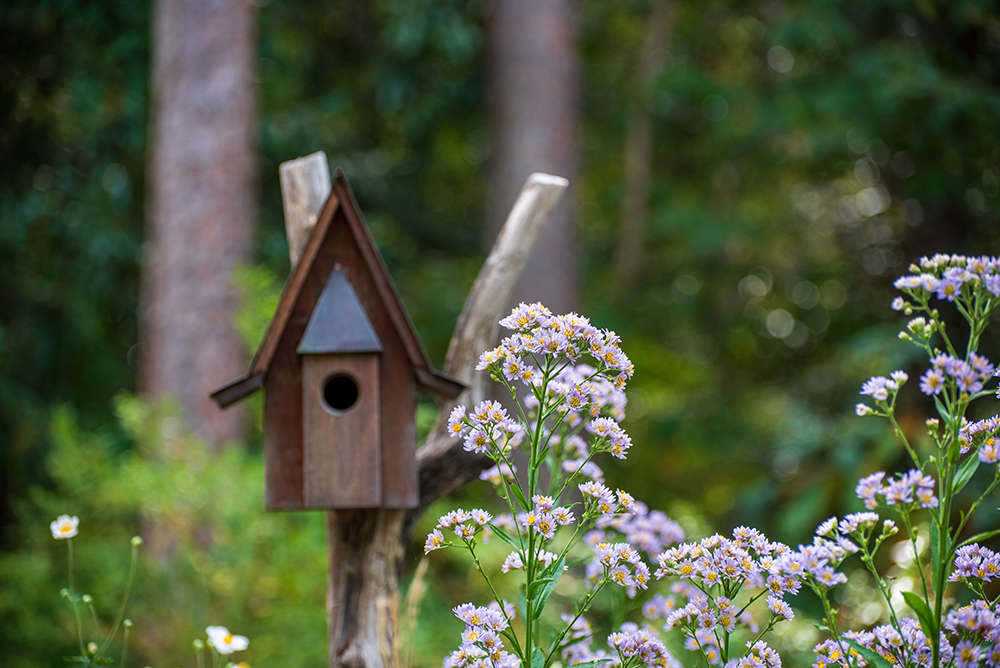
Aster is the Latin word for “star,” and asters are well named in multiple respects—not only are their flowers as beautiful and numerous as the stars, they are also one of the showiest and most reliable performers in the late-season garden.
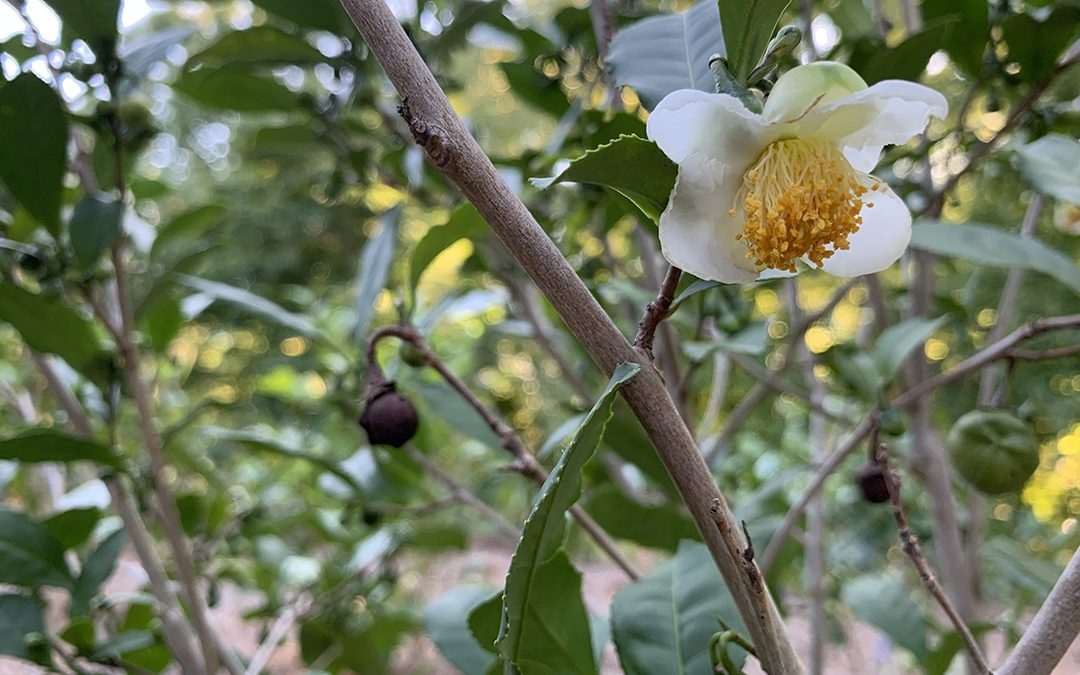
The first question visitors to Duke Gardens usually have about the tea camellias are, “You can really grow those here?” Yes, you can!
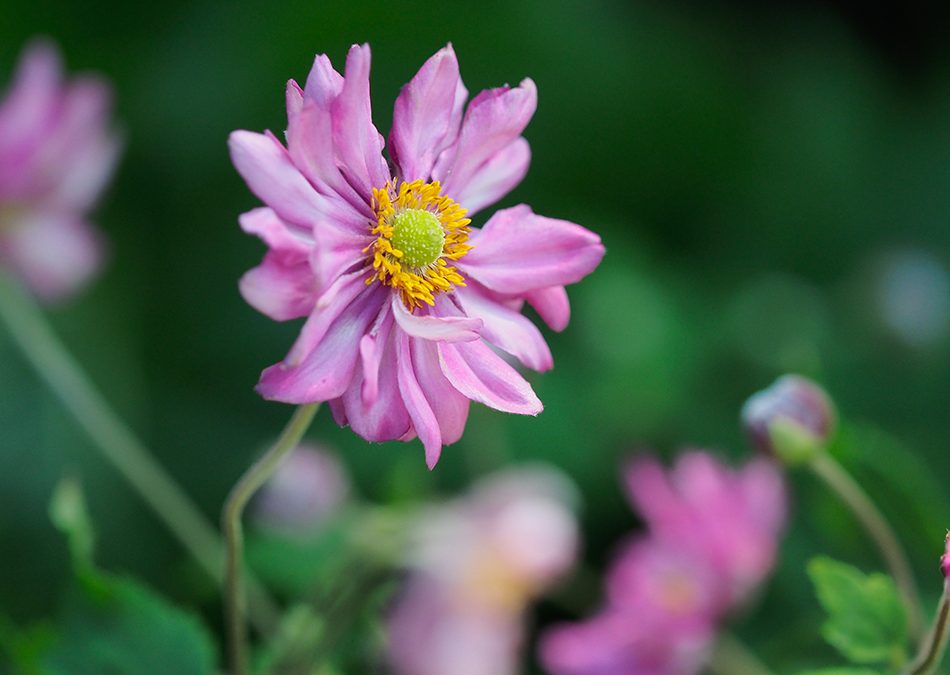
The pride of many a fall perennial border, Japanese anemones grow in thick clumps, sending up dozens of blooms resembling pink and white buttercups on long stems from August through October.
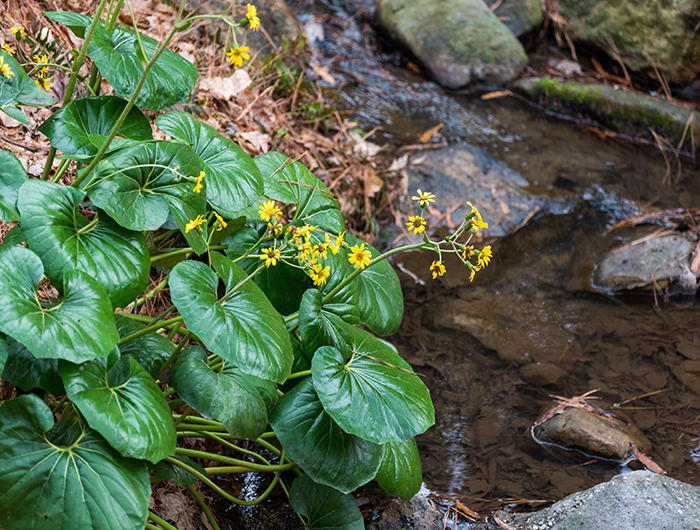
How did the leopard plant get its spots? The answer depends on which variety you’re talking about.
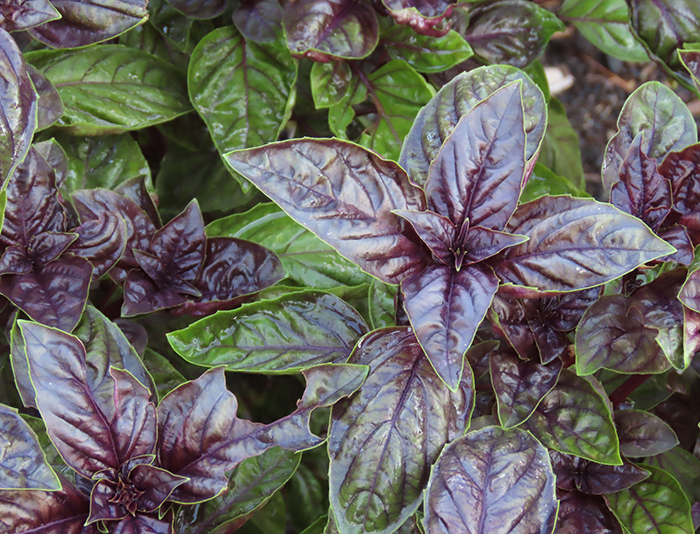
Sweet basil (Ocimum basilicum) is an easy-to-grow, fragrant and delicious herb that’s perfect for any herb garden, cottage garden or Mediterranean-style garden.

If you have had occasion to touch the sensitive plant in the Charlotte Brody Discovery Garden, then you know how accurate its namesake is!
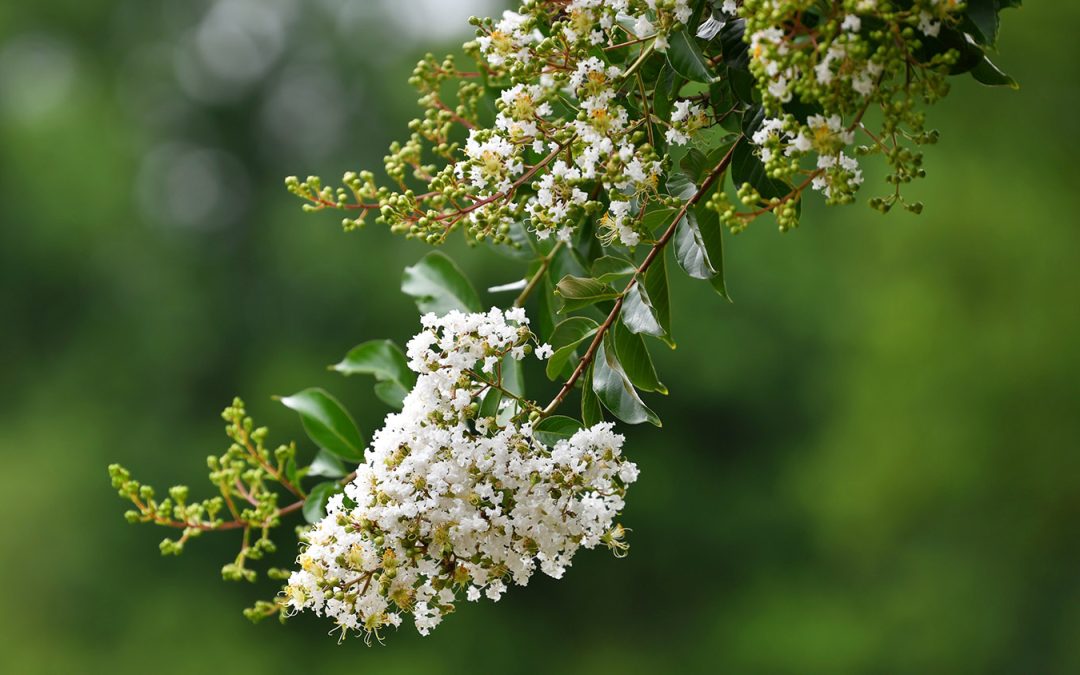
One of the most popular ornamental plants in the southern United States, crapemyrtles (Lagerstroemia spp.) might seem too ubiquitous to merit much attention. However, a closer examination of this widely planted genus proves that “common” is by no means synonymous with “boring.”
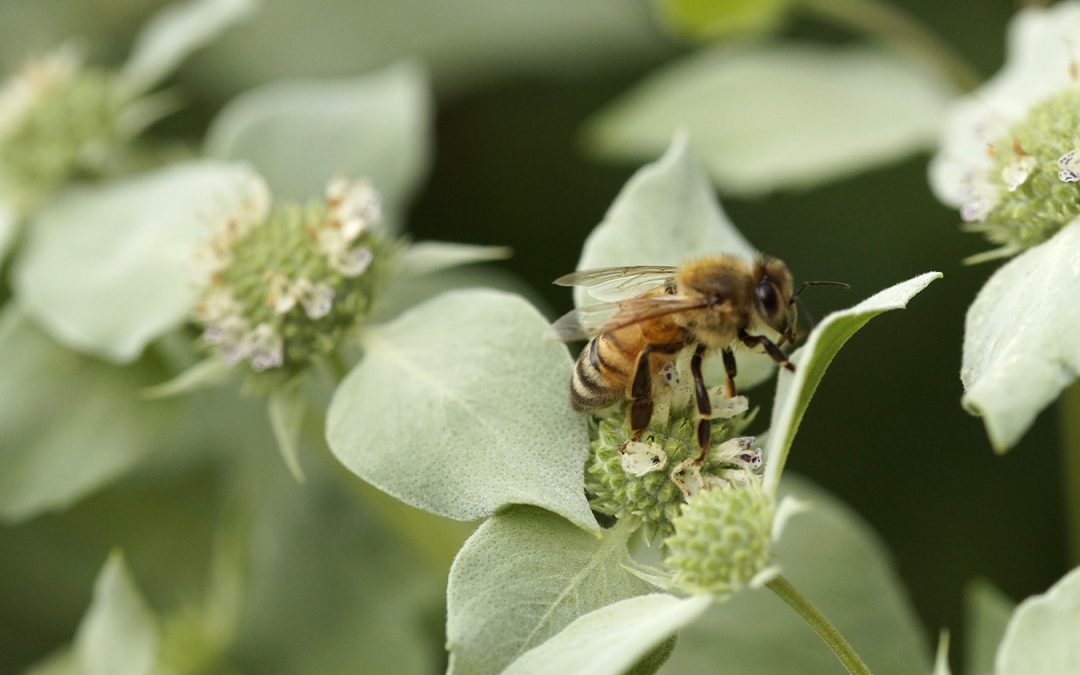
Most animals rest during hot summer afternoons, but visitors to the Blomquist Garden of Native Plants or the Historic Gardens’ Butterfly Garden will notice one group of plants in particular that are literally buzzing with activity from late June through September, even in the middle of the day.
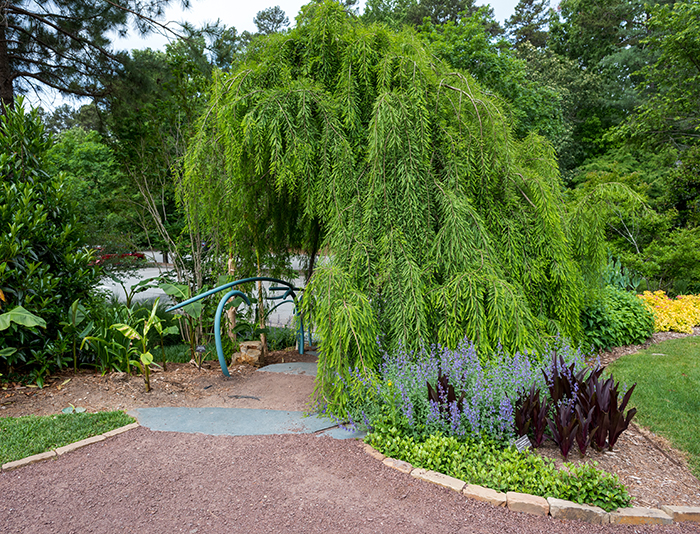
How do you turn a tree into a living shelter? With patience, luck, care and, of course, the right plant.
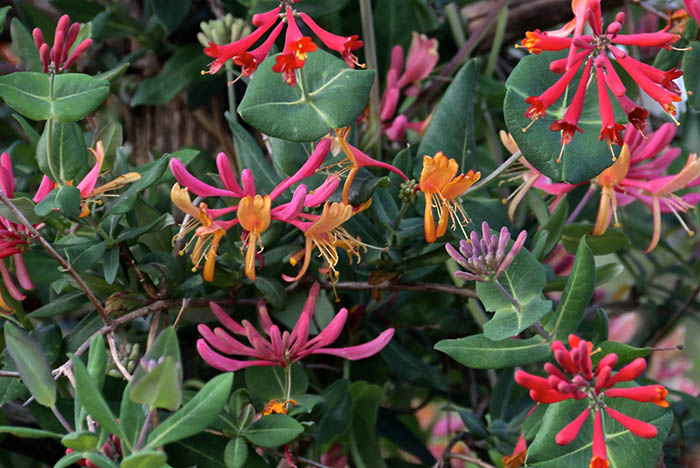
Coral honeysuckle (L. sempervirens) is a Southeastern native vine that possesses all the excellent traits of its genus and is also highly beneficial for wildlife.
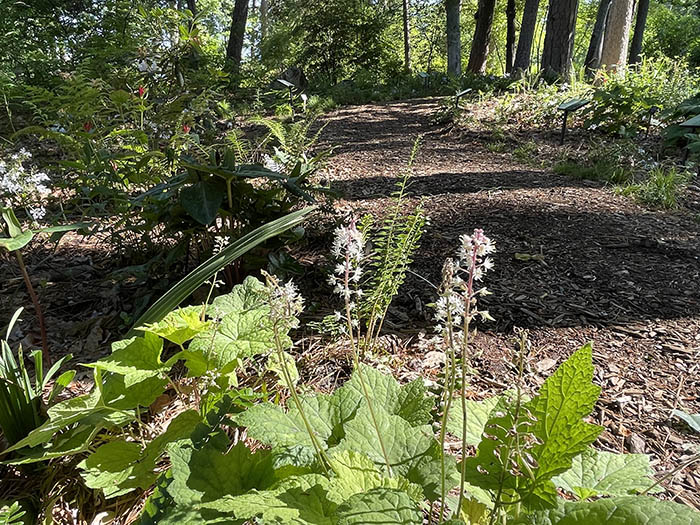
Many visitors are aware that dog walking is permitted in Sarah P. Duke Gardens before 10 a.m. and after 5 p.m. It’s often a surprise for dog walkers to learn that the Blomquist Garden of Native Plants is an area where dogs, with the exception of service animals, are not permitted at any time.

It’s really easy being green if you have a pond with common duckweed (Lemna minor), which can quickly turn the entire surface of a water feature into a vivid carpet of color.

The flowering dogwood (Cornus florida) is simultaneously one of our most recognizable native trees and an iconic symbol of the American South.

It’s easy to pick out eastern redbud (Cercis canadensis) in the spring—just look for the purple!
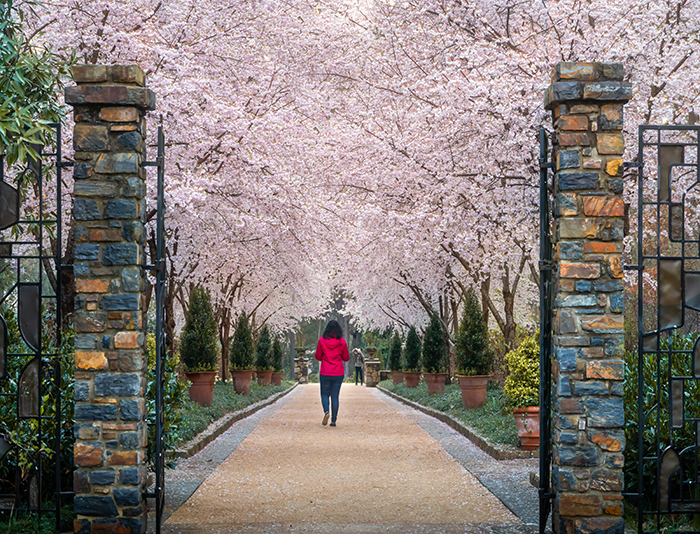
Here at Duke Gardens, the custom of appreciating cherry blossoms is alive and well.

Magical and more than a little mysterious, Duke Gardens’ annual spring bulb displays in the Historic Gardens and Doris Duke Center Gardens are a source of fascination for both frequent visitors and newcomers alike.
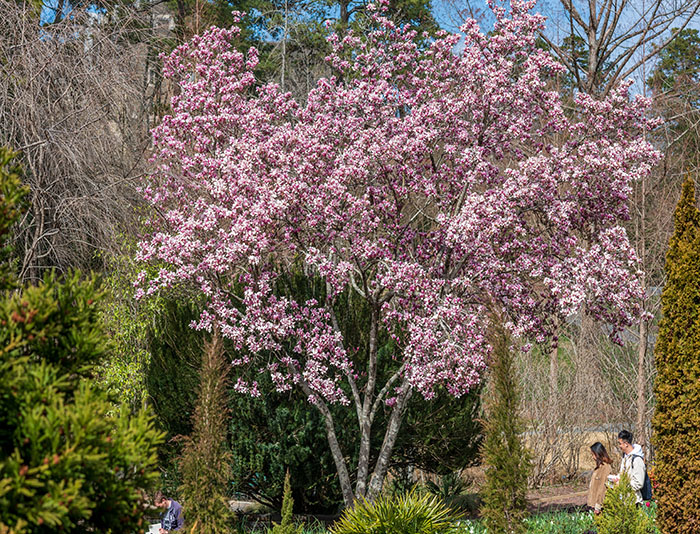
‘Alexandrina’ is one of the oldest cultivars of saucer magnolia, first introduced in France in 1831, and remaining popular to this day due to its showy, early blooming flowers.

Rightly celebrated for their beauty during what can otherwise be a gray and drab time of year, many winter-blooming woody trees and shrubs are equally noteworthy for their pleasant scents. Here are a handful worth sniffing out this season during your next visit to Duke Gardens.
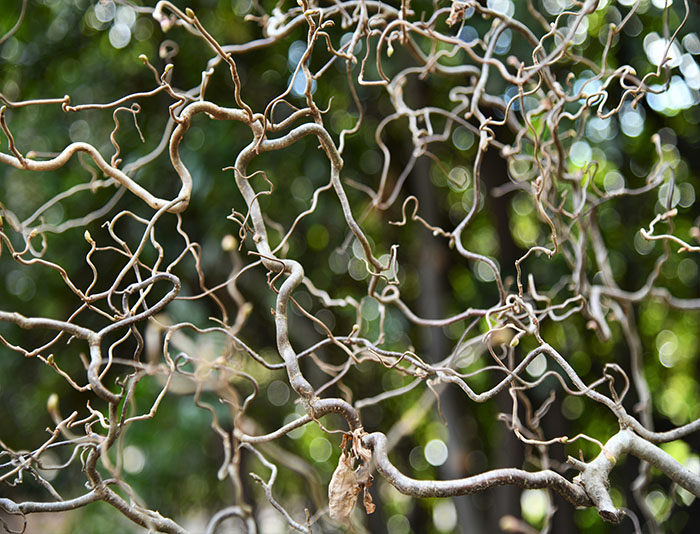
Although a beautiful sight at any time of year, corkscrew hazel is best appreciated in late winter, once the leaves have fallen and exposed the complex twists and turns of its winding branches.
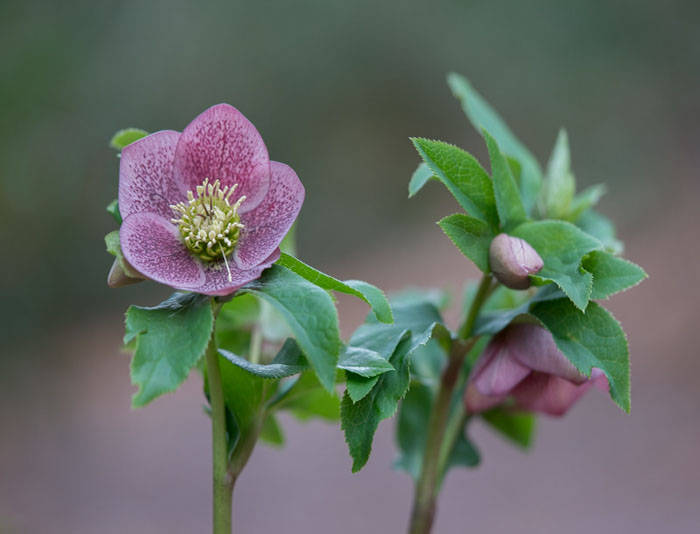
Native to Eurasia, wild hellebores have captured the human imagination for centuries, thanks to their seemingly miraculous tendency to bloom in the middle of winter.

This common fern is one of the easiest native species to identify, thanks to its distinct evergreen fronds, which stand in sharp contrast against dominant grays and browns of the winter forest.
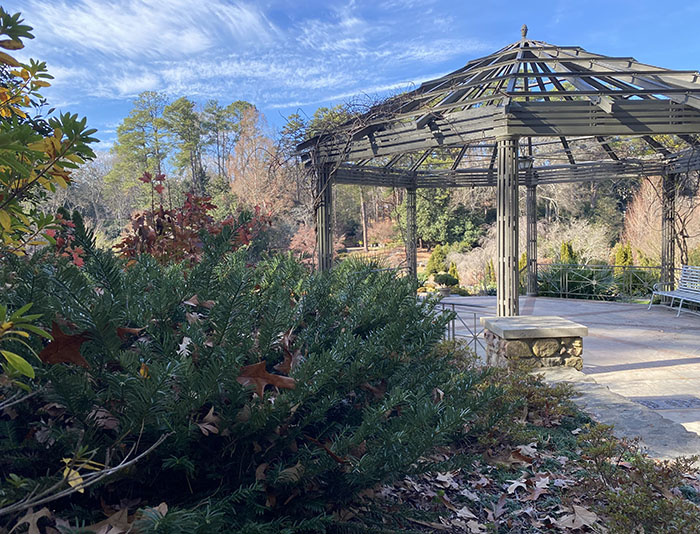
The Duke Gardens plum yew (Cephalotaxus harringtonia ‘Duke Gardens’) was discovered right here at Duke Gardens in 1958 by horticulturist and future director Richard Fillmore.

To paraphrase “Field of Dreams,” if you plant it, they will come. But who are “they,” anyway?
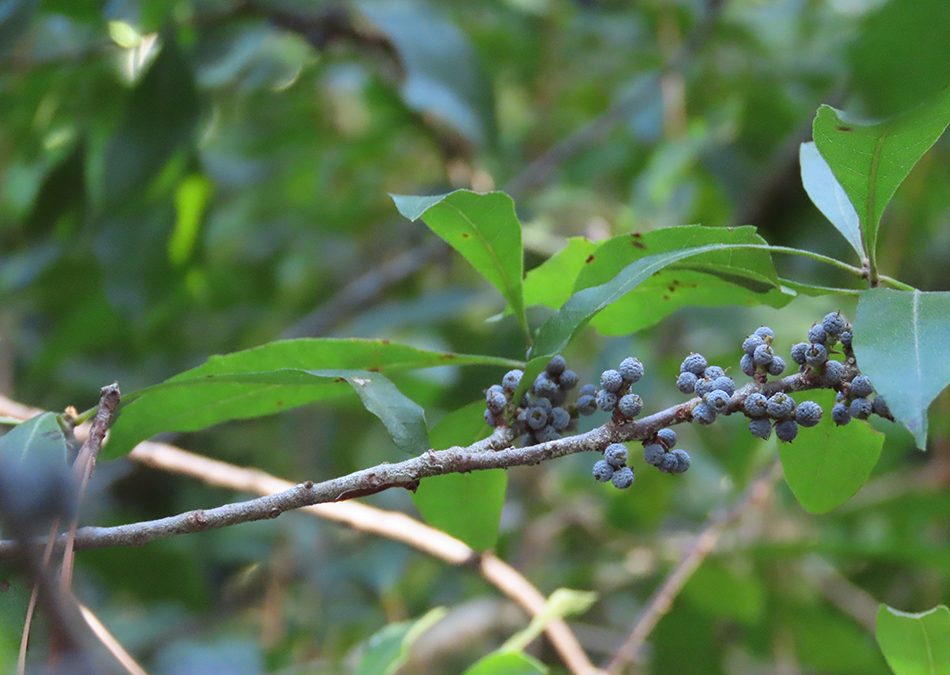
If you love candles, you’re probably familiar with the color and scent of bayberry, a popular decoration in old-fashioned Christmas displays.
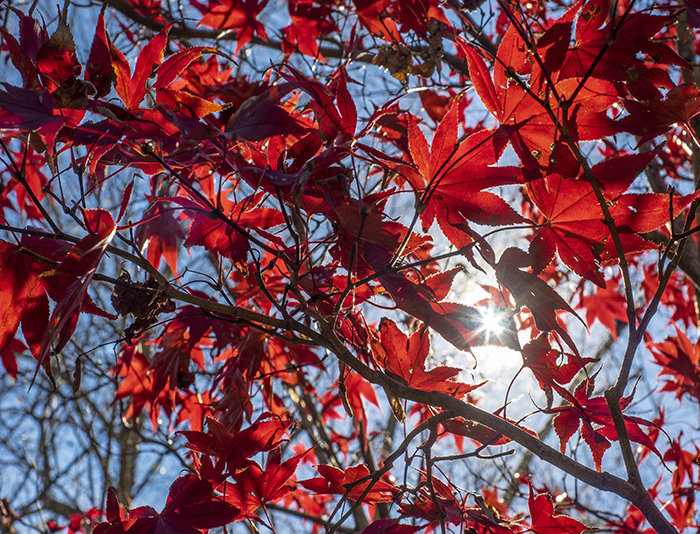
Fall in the North Carolina Piedmont has a knack for seizing all of our senses, from crickets chirping to mark the waning days, to the early morning chill of frosty lawns and windowsills. But a walk through the woods or even a single glance out the window marks the most dramatic shift of all in the trees themselves.
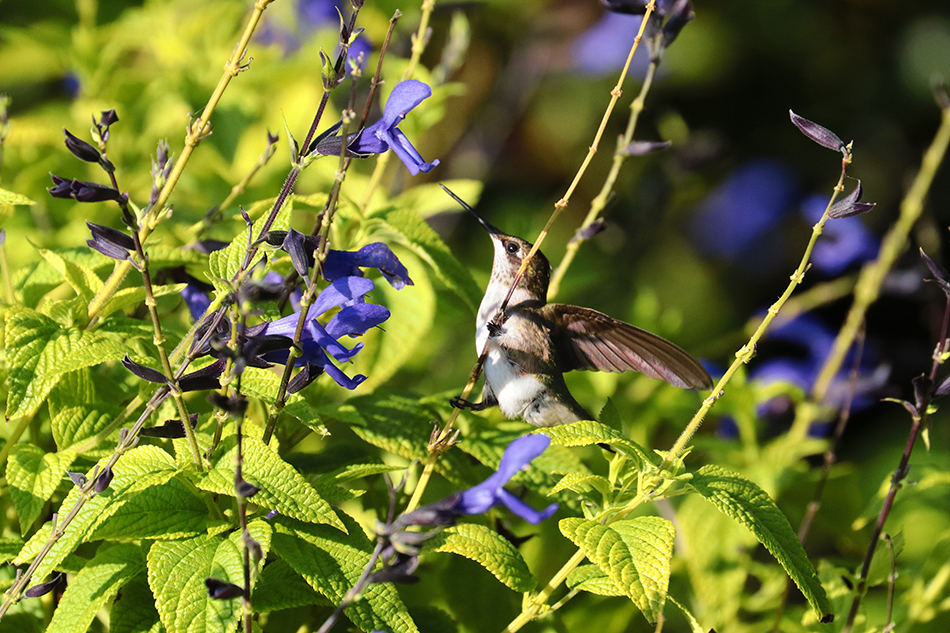
Boasting flags of brilliant blue and purple inflorescences from late August until frost, anise-scented sage (Salvia guarantica) is impossible to miss right now in the Historic Gardens.

While many native plants are winding down by mid-September, others are just getting started.
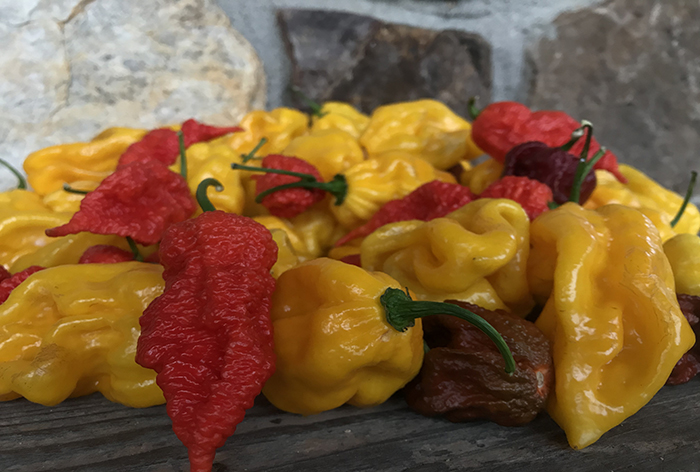
Nothing loves the heat of August like a hot pepper, and few places in Duke Gardens are warmer than the Charlotte Brody Discovery Garden.
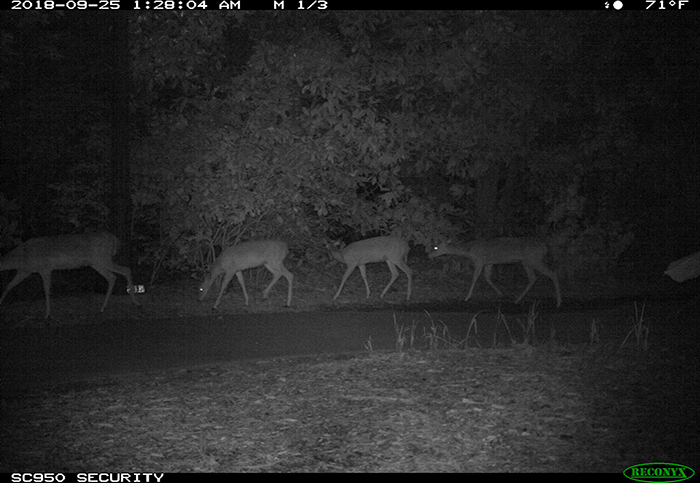
Despite being adjacent to a major university and a bustling city, the same features that make a region so attractive to humans—the lush landscapes and forested buffer—offer a corridor directing hungry animals right to the Gardens.

Do you love butternut squash but dream of a smaller variety so you don’t have to eat it for a whole week straight?
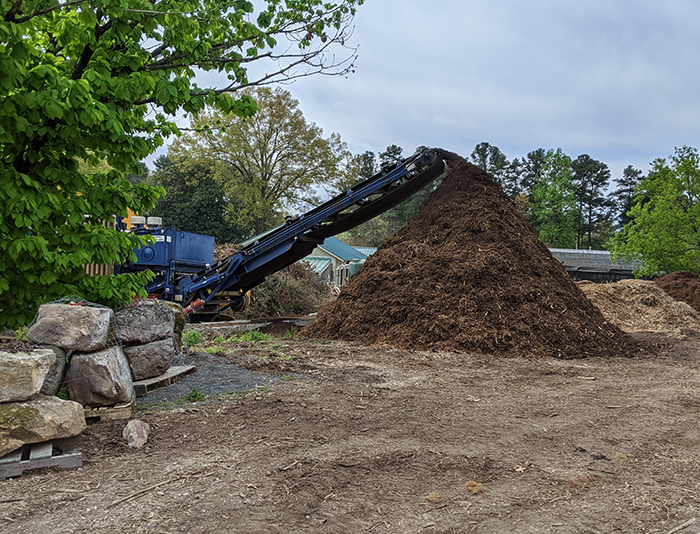
How do you turn trash into treasure? As Sarah P. Duke Gardens has grown over the years, our landscape waste has grown with it.
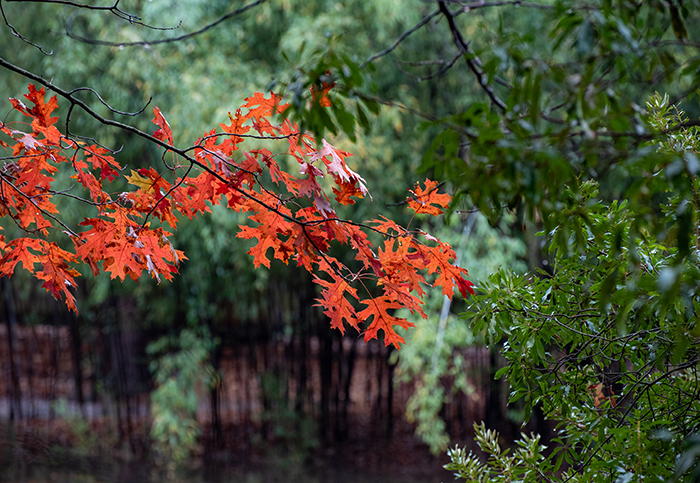
This year, take a “leaf” out of Mother Nature’s book and consider “leaving the leaves” to add all those nutrients back into the soil.
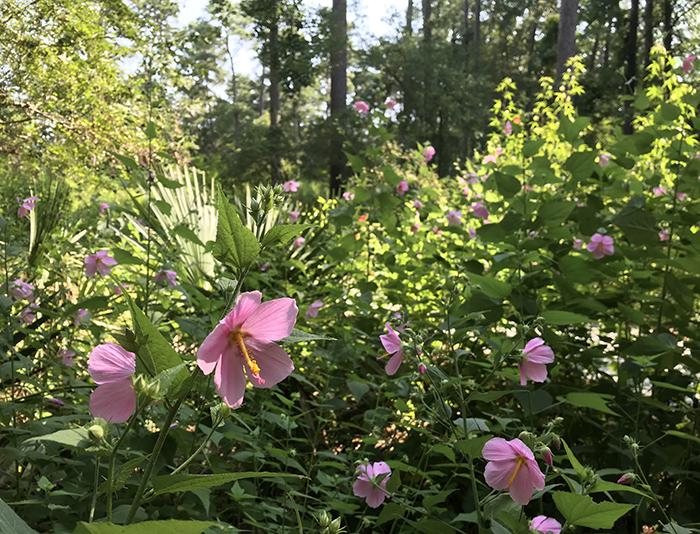
This native perennial is one of the last to emerge each year—long after other species have come and gone—but its profusion of silver-green, maple-like leaves and masses of pink blooms make it well worth the wait.

The heat and humidity of summer can be unbearable, but for me they are rewarded with one of my favorite foods, watermelon.

Duke Gardens facilities manager Nick Schwab features one of his favorite plants for butterflies and birds and an excellent low maintenance native plant that is drought tolerant once established.
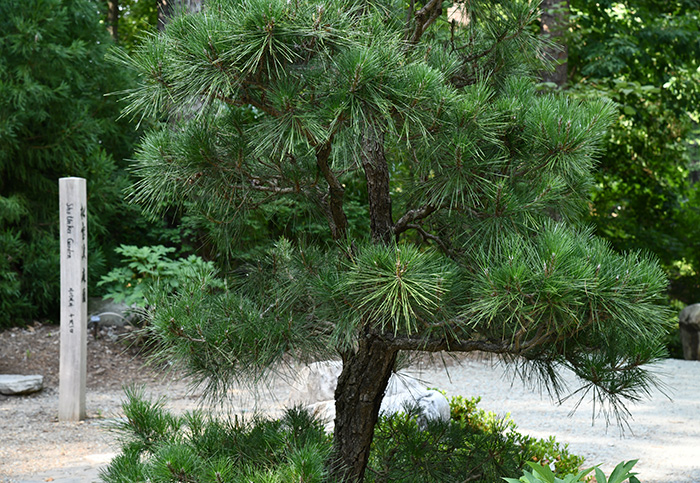
When folks are asked to think of a Japanese garden, one of the initial images that comes to mind is the iconic, meticulously trained Japanese black pines, Pinus thunbergii.
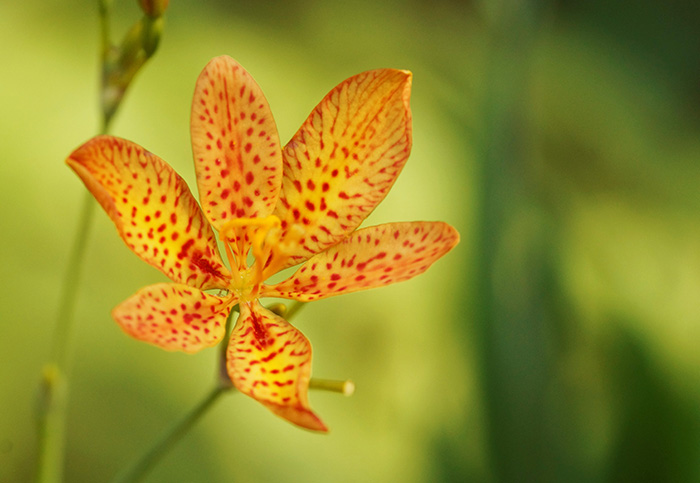
These dainty flowers are one of my favorites because they add a lot of interest in the summer and fall with their color, flower shape and fruit.

With so much rain engulfing Duke Gardens in recent weeks, it’s been exciting to see which plants have been the most impacted by the dramatic influx of water.

Few plants at Duke Gardens say “summer!” with such tropical flair as bromeliads do.

How many people have been out and about at a park or even Duke Gardens and seen a small box hanging with a bunch of little holes drilled in it? If so, then you were likely looking at a pollinator house.

Raised in England, where hedgerows are integral to the landscape, I’m intrigued by the growing advocacy for the reintroduction of hedges in the United States for wildlife.

This mass planting consists of 30 plants that were planted two years ago and have since created a wonderful carpet of tiny yellow to bronze flowers that bloom from March through May.

My personal favorite “season” isn’t a season at all, but the transition between winter and spring. That’s when all of the magic happens.
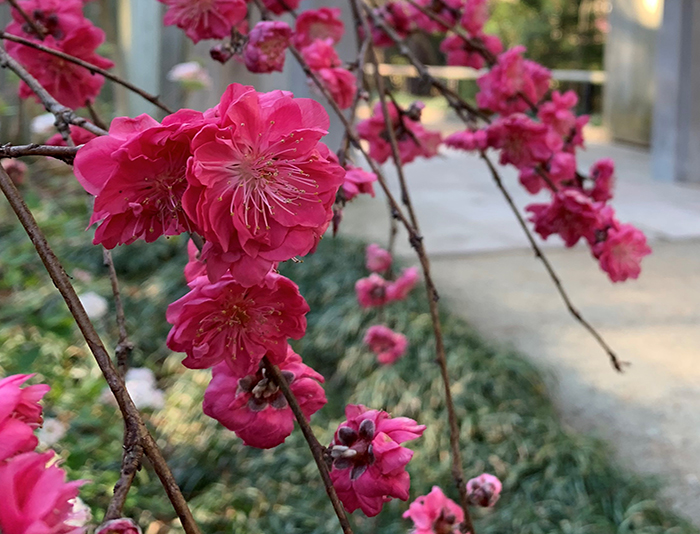
Prunus persica ‘Crimson Casade’ is one of my favorite spring-blooming trees in Duke Gardens.
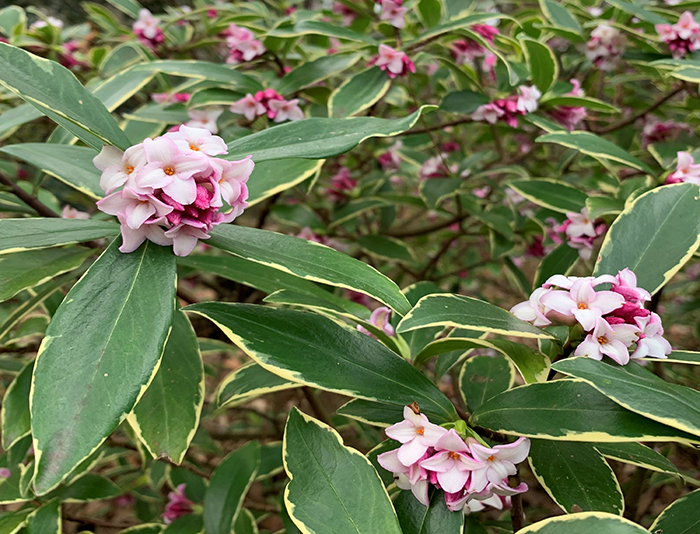
Daphne odora ‘Aureomarginata’ is an evergreen shrub that blooms anytime from January to March here in Zone 7.

All trees tell us a story. The shagbark hickory has quite a few stories and a long history with animals, insects and people.

Sometimes referred to as “winter roses,” and with thousands of named cultivars, camellias are known for their amazing flowers and forms. The cultivar ‘Tama-no-ura’ is as special as they come.
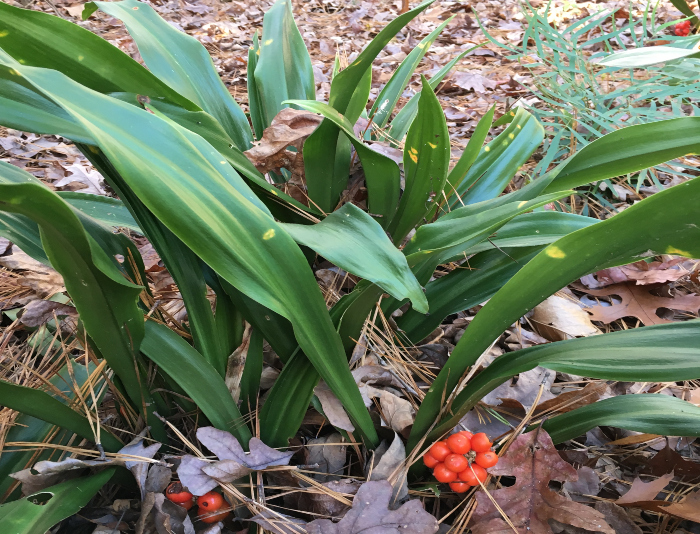
Rohdea japonica is an evergreen perennial native to Japan, China, and Korea.
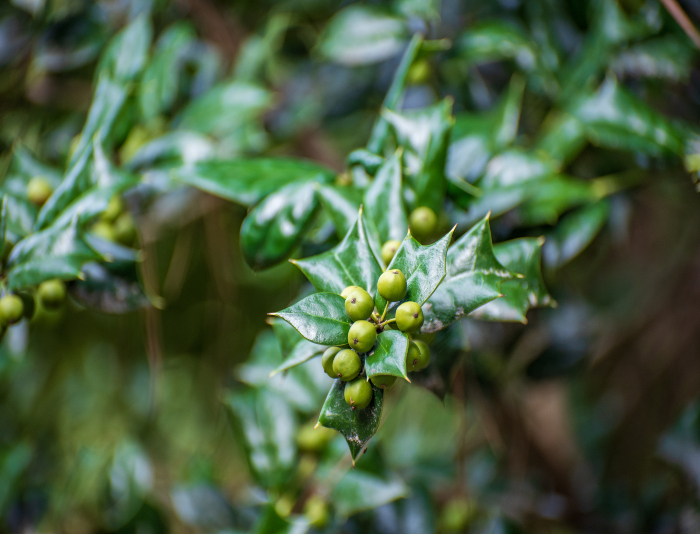
Of all seasonal greenery, the hollies (genus Ilex) have always been of special significance.
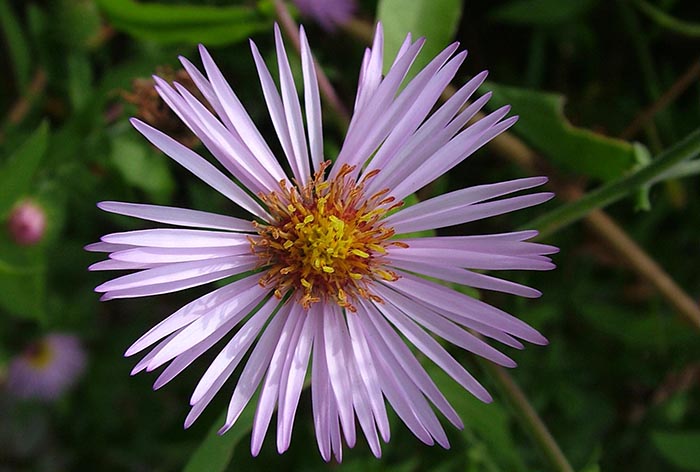
I am always interested in cool climbers. Climbing aster, known to us botanical types as Ampelaster carolinianus, is one of the coolest I know.
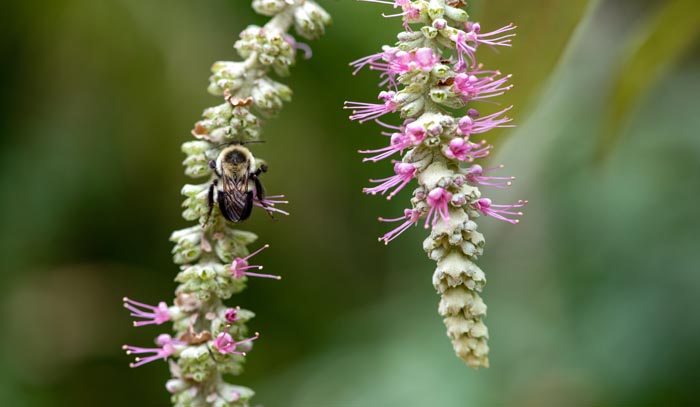
Here is one that’s hard to pronounce; I am not even sure I say it right!
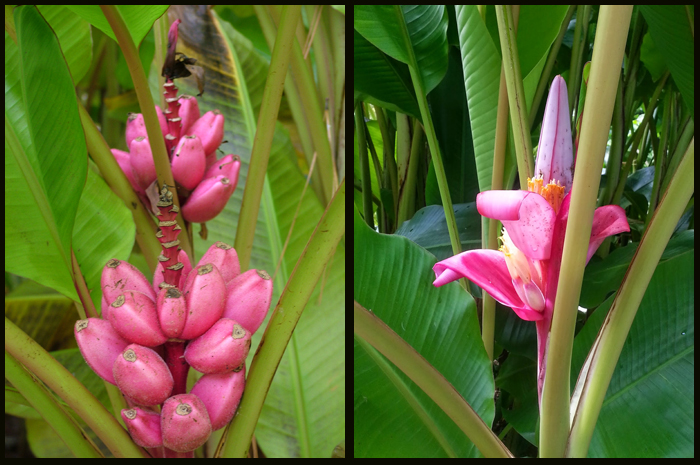
The pink banana is a true hardy tropical for the summer landscape and will leave many gardeners asking, “What’s that?”
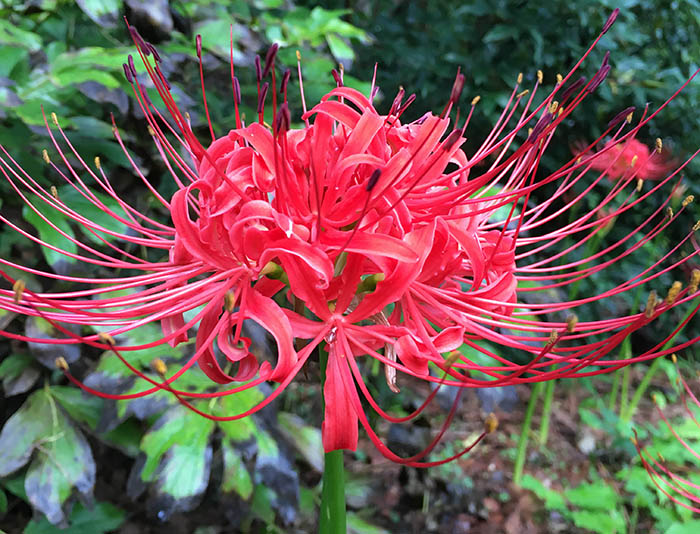
There are 20 species of surprise lilies (and many cultivars), with differences in color of the flower as well as their shape and size.
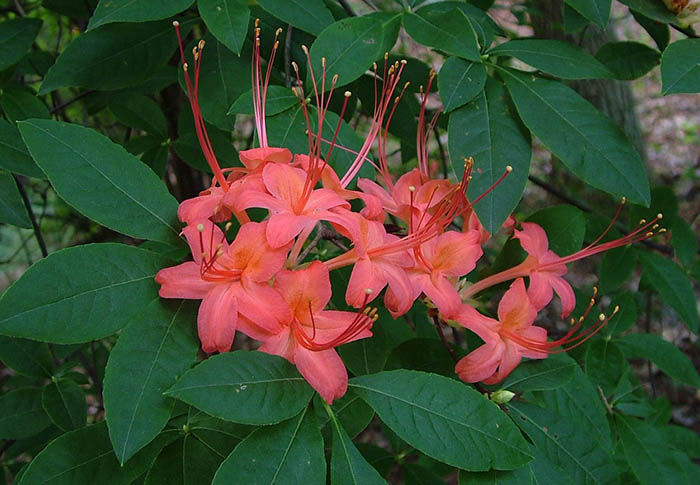
Not only is this azalea one of the most striking native rhododendrons in the Southeast, it is also one of the rarest.

One of the more friendly cacti in the world, the feather cactus is thickly covered in white downy spines that are soft to the touch.
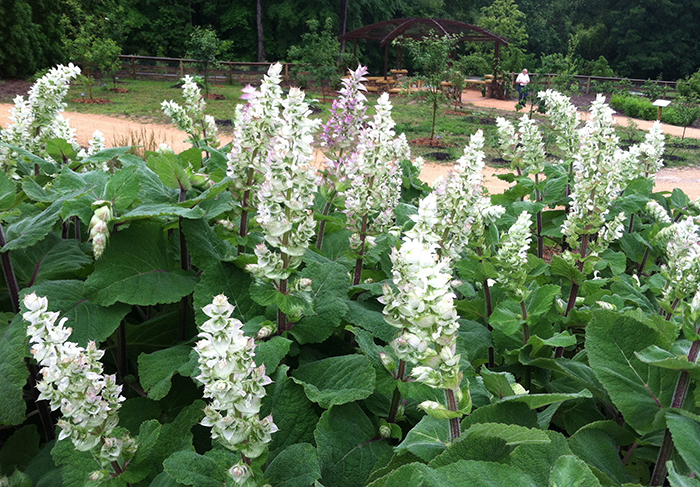
We grow this North Carolina heritage plant in the Charlotte Brody Discovery Garden to exemplify one of the most important crops to this state.

If you have a keen eye and a slow step as you are wandering the woods in mid-February through early April, you might be lucky enough to spot one of my favorite spring ephemerals.
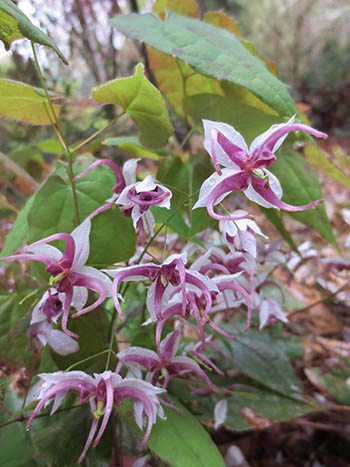
Many Duke Gardens visitors ask what kinds of perennials grow well in the shade, and the first plant that always comes to my mind is epimediums.
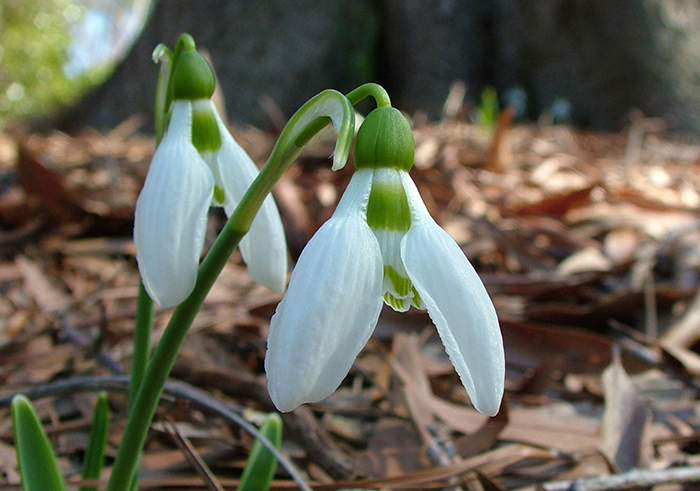
These bulbs emerge and produce their little snowdrop flowers in February and March.

Horticulture director Bobby Mottern explains some recent magnolia pruning and tree removals.
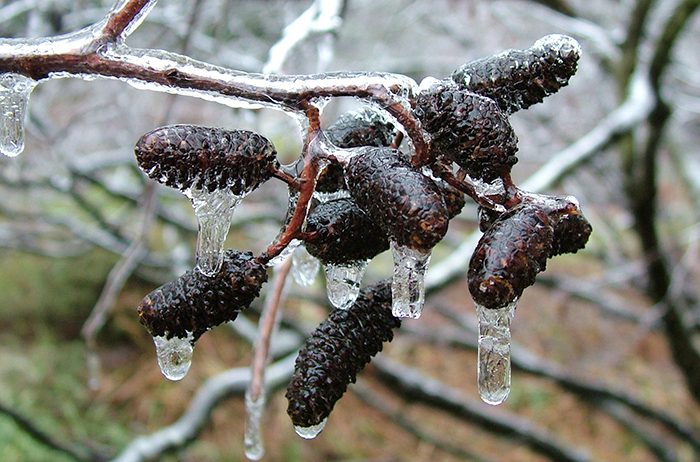
This has to be one of my favorite plants in the Blomquist Garden. It is a landscape workhorse.
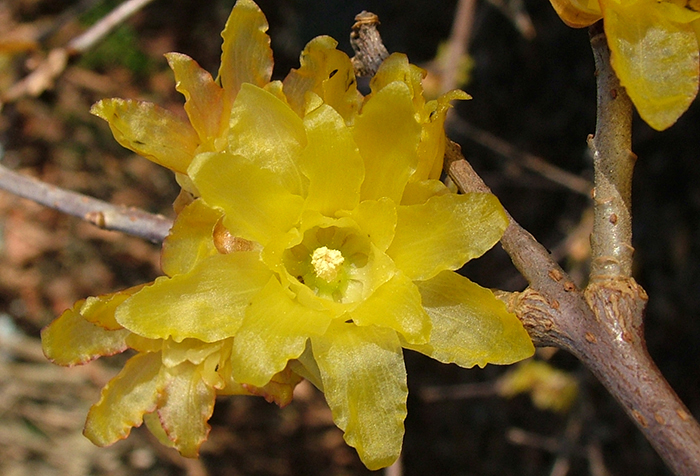
There are a handful of winter blooming plants, and wintersweet is one of my favorites.
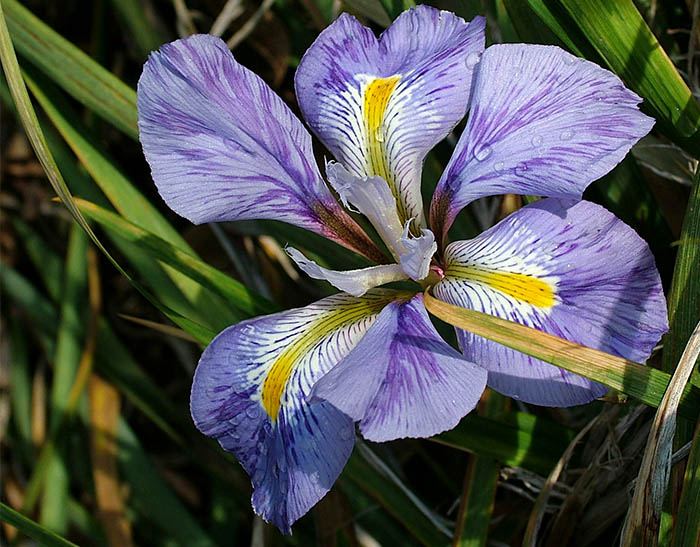
Iris unguicularis is an underutilized iris that blooms from mid-winter through early spring.
Questions about our Garden Talk series?
Please contact us at gardens@duke.edu.
